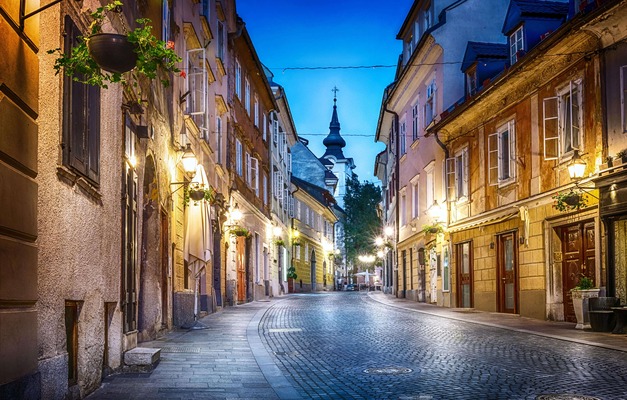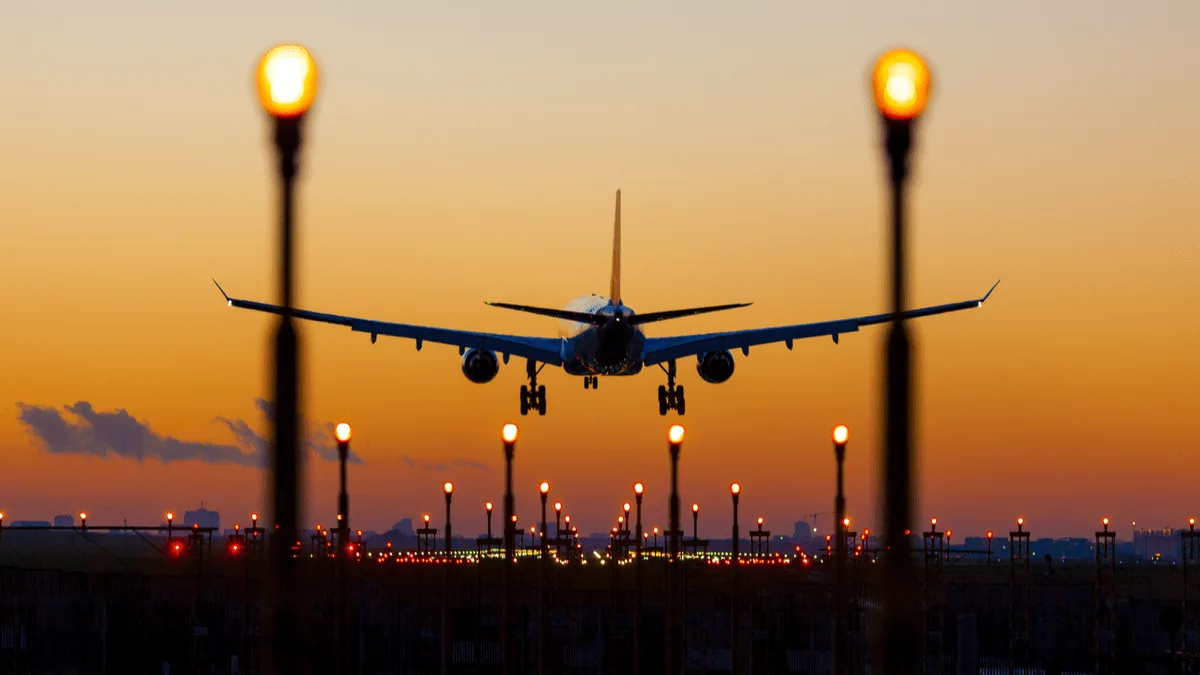
Austrian Serenade: Imperial Cities and Alpine Splendors
 9 Day Tour of Vienna and Salzburg
9 Day Tour of Vienna and Salzburg
Overview
Trip Map
Itinerary
Inclusions
Reviews







9 Days 8 Nights
Best Time: Jan-Dec
Exploring Scenic Countryside
History Buffs
Experience a captivating journey through the heart of Austria, where Vienna's imperial splendor blends with Salzburg's Alpine charm. Your journey is a mix of urban discovery and rural escapes, as day excursions unveil the picturesque landscapes of the Wachau Valley and the majestic Alps. You'll even take an excursion into the nearby Bavarian Alps. Enjoy private guided tours in both iconic cities, and enjoy a seamless trip with the help of our detailed travel guidance and navigation aids. This trip is more than a visit; it’s an immersion into the soul of Austria.
- Take a day cruise along the Danube, soaking in the breathtaking vistas of the Wachau Valley
- Explore the historic grandeur of Schönbrunn Palace, in Vienna where the imperial past lives on
- Relive the 'Sound of Music', following its trail on a guided tour of Salzburg and its surroundings
- Experience the Alpine wonder of Berchtesgaden in Bavaria, cruising a lake encircled by mountains.
- Wander the lanes of Salzburg, uncovering its old-world charms and discovering its Baroque gems
Experience a captivating journey through the heart of Austria, where Vienna's imperial splendor blends with Salzburg's Alpine charm. Your journey is a mix of urban discovery and rural escapes, as day excursions unveil the picturesque landscapes of the Wachau Valley and the majestic Alps. You'll even take an excursion into the nearby Bavarian Alps. Enjoy private guided tours in both iconic cities, and enjoy a seamless trip with the help of our detailed travel guidance and navigation aids. This trip is more than a visit; it’s an immersion into the soul of Austria.
- Take a day cruise along the Danube, soaking in the breathtaking vistas of the Wachau Valley
- Explore the historic grandeur of Schönbrunn Palace, in Vienna where the imperial past lives on
- Relive the 'Sound of Music', following its trail on a guided tour of Salzburg and its surroundings
- Experience the Alpine wonder of Berchtesgaden in Bavaria, cruising a lake encircled by mountains.
- Wander the lanes of Salzburg, uncovering its old-world charms and discovering its Baroque gems

Hofburg Palace
Castles & Chateaux

St Stephen’s Cathedral
Churches & Monasteries

Schönbrunn Palace & Zoo
Parks & Gardens

Hohensalzburg Fortress
Castles & Chateaux

Old Town
Architecture

Mirabell Palace & Gardens
Parks & Gardens
Must see sights

Hofburg Palace
Castles & Chateaux

St Stephen’s Cathedral
Churches & Monasteries

Schönbrunn Palace & Zoo
Parks & Gardens

Hohensalzburg Fortress
Castles & Chateaux

Old Town
Architecture

Mirabell Palace & Gardens
Parks & Gardens
Starting from
$1598
per person
 Not included
Not included Secure Your Customizable Trip
Enter your details to embark on a journey that can be tailored just for you.
Start
Travelers
Add Room
Remove Room
Preferred Hotel Stars
Craft Your Own Itinerary
Select your interests and destinations for a trip plan inspired by you.
Trip Map & Itinerary
Enable/Disable Map Scrolling
Click To Make Map Interactive

Trip Timeline
 Edit Details
Edit DetailsArrival
4 nights
Vienna
Austria
Train: 2.5h
4 nights
Salzburg
Austria
Departure
Day-By-Day Itinerary
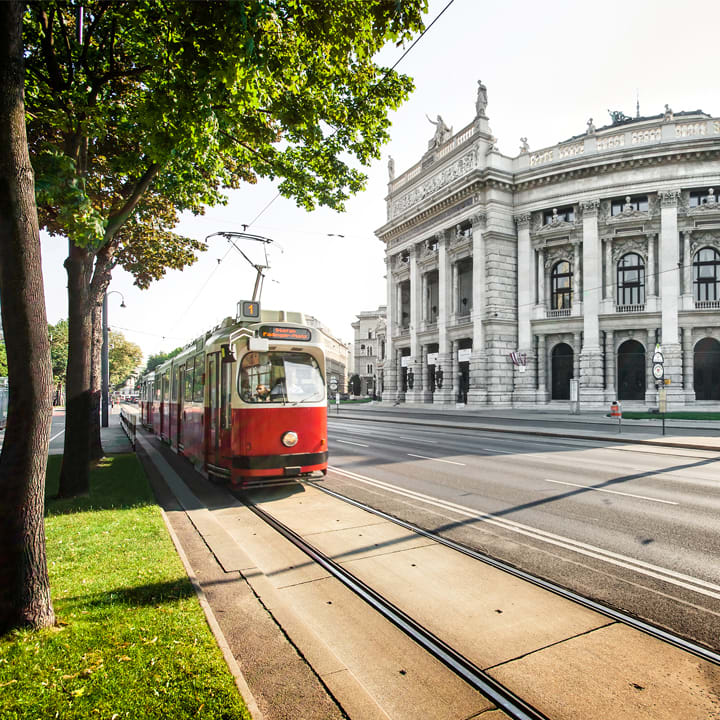
Day 1
Arrive Vienna
View More
Day 1
Arrive Vienna



To Be Determined
Arrival in Vienna Airport and Transfer to Hotel by Public Taxi
Vienna has one main airport, Vienna International Airport, where almost all visitors arrive. Taxis are available directly at the terminal exit, or you can arrange a private transfer for added convenience. Uber is also available to those who have the app.

Day 1
Arrive Vienna
View More


Day 1
Arrive Vienna




To Be Determined:
Taxi Transfer to Hotel
Mid-Day/Afternoon:
Ring Street
Late Afternoon/Early Evening:
Hip Vienna


Day 2
Vienna
View More
Day 2
Vienna



9:00 AM - 11:30 AM
Guided Walk through Vienna's Inner City
This tour takes you back in history to explore the Vienna that stood within the old city walls. You will learn about the humble beginnings of Vienna before it became the capital of a great empire and one of the most important cities in Europe. You will discover how Vienna's early inhabitants lived and how they left their mark on the city and its beautiful Medieval, Renaissance, and Baroque architecture.

Day 2
Vienna
View More


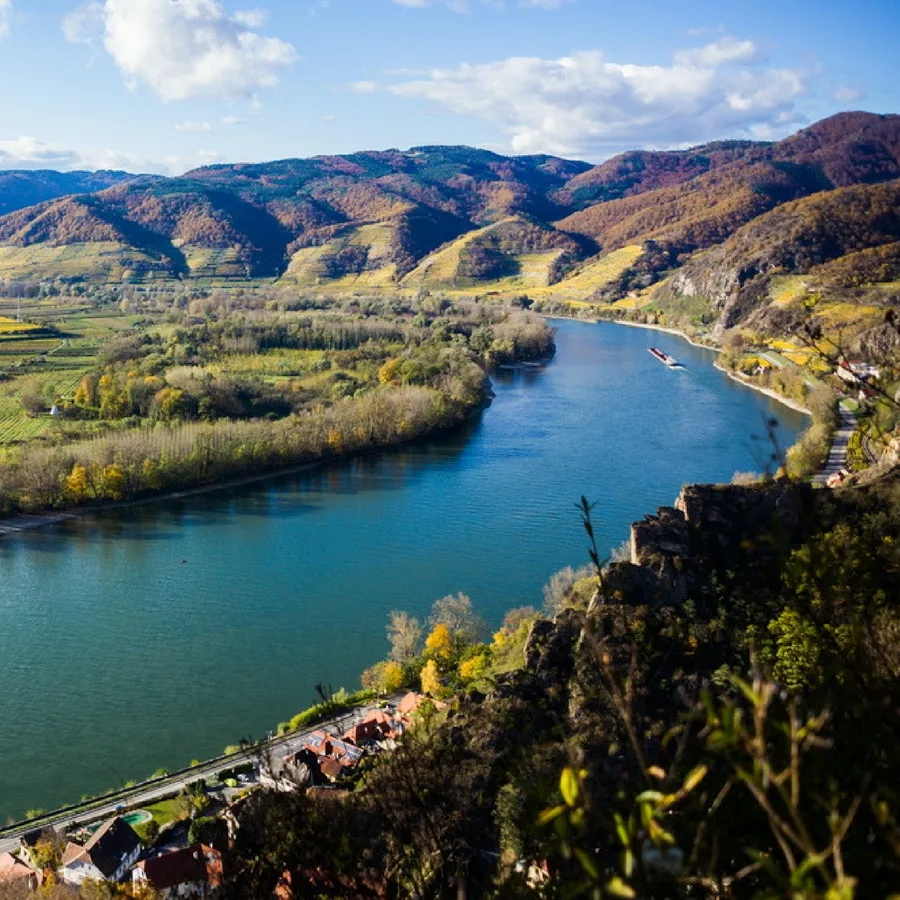
Day 3
Vienna
View More
Day 3
Vienna

Early Morning to Evening
Danube Cruise in the Scenic Wachau Valley
A one-and-a-half-hour train ride from Vienna brings you to the town of Melk, where you can tour the vast Melk Abbey. From there you can begin a 22-mile cruise through the Wachau Valley, considered the most beautiful stretch of the entire Danube River. You'll pass medieval castle ruins, hills covered in vineyards, and several charming villages, where you can debark to try some wine or take a hike up to a castle. The valley is also a perfect destination for cyclers and winery tours.

Dürnstein
Explore the twisting narrow lanes of this delightful monastery town.
Show More

Dürnstein Castle Ruins
Hike to the dramatic ruins of a medieval castle built in 1100's.
Show More

Melk Abbey
Tour a huge and splendid Baroque monastery.
Show More

Spitz
Stop to taste the wine in a postcard-pretty town surrounded by vineyards.
Show More

Dürnstein
Explore the twisting narrow lanes of this delightful monastery town.
Show More

Dürnstein Castle Ruins
Hike to the dramatic ruins of a medieval castle built in 1100's.
Show More

Melk Abbey
Tour a huge and splendid Baroque monastery.
Show More

Spitz
Stop to taste the wine in a postcard-pretty town surrounded by vineyards.
Show More
prev
next

Day 3
Vienna
View More

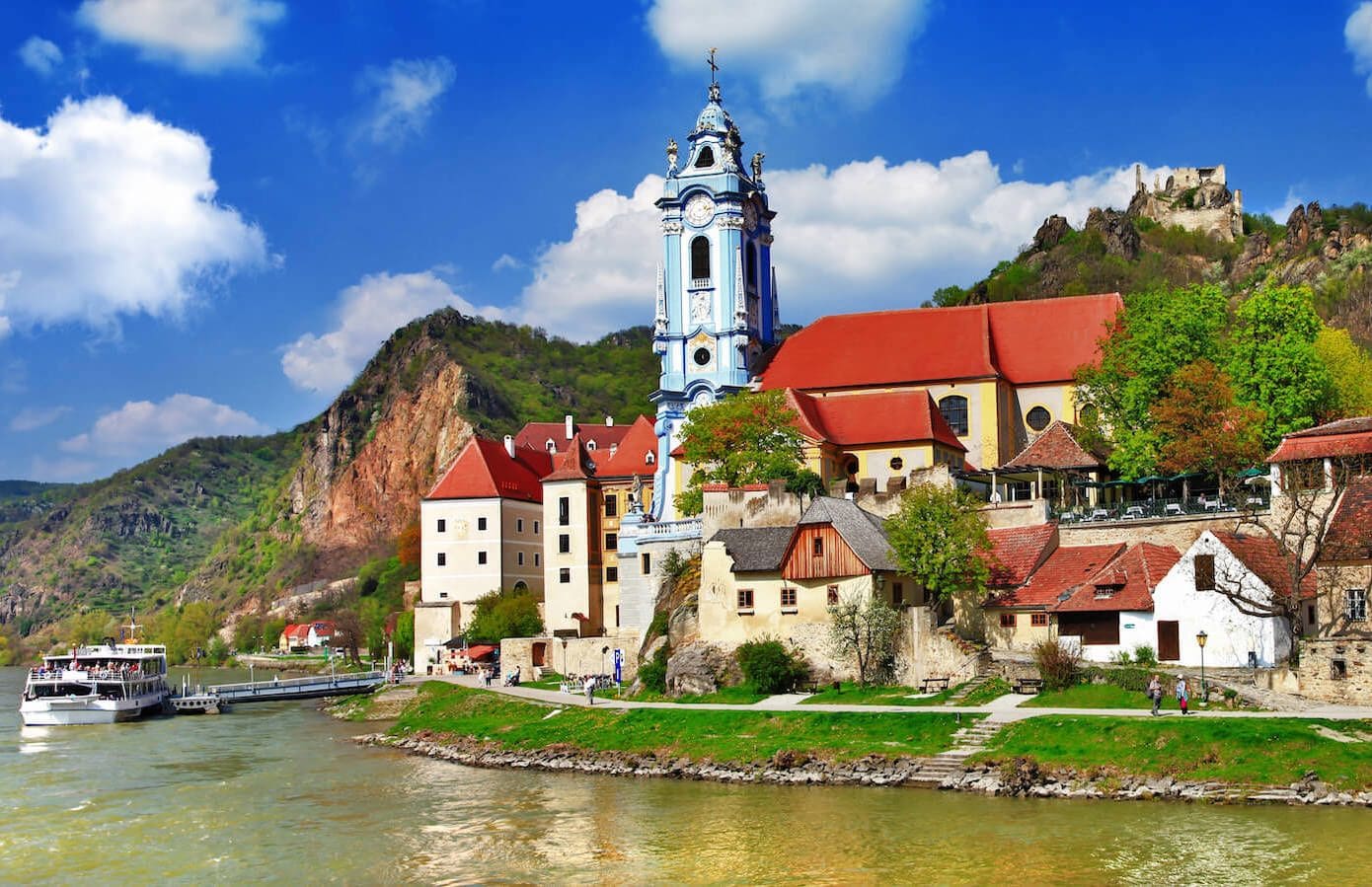
Dürnstein
 Highlight of Wachau Valley
Highlight of Wachau ValleyExplore the twisting narrow lanes of this delightful monastery town.
Named for the castle that overlooks it, Dürnstein is probably the most-visited stop in the Wachau valley. Reached by an ancient tunnel leading from the boat docks, it is well-known for its wine as well as the beautiful blue church tower of its Augustinian monastery.
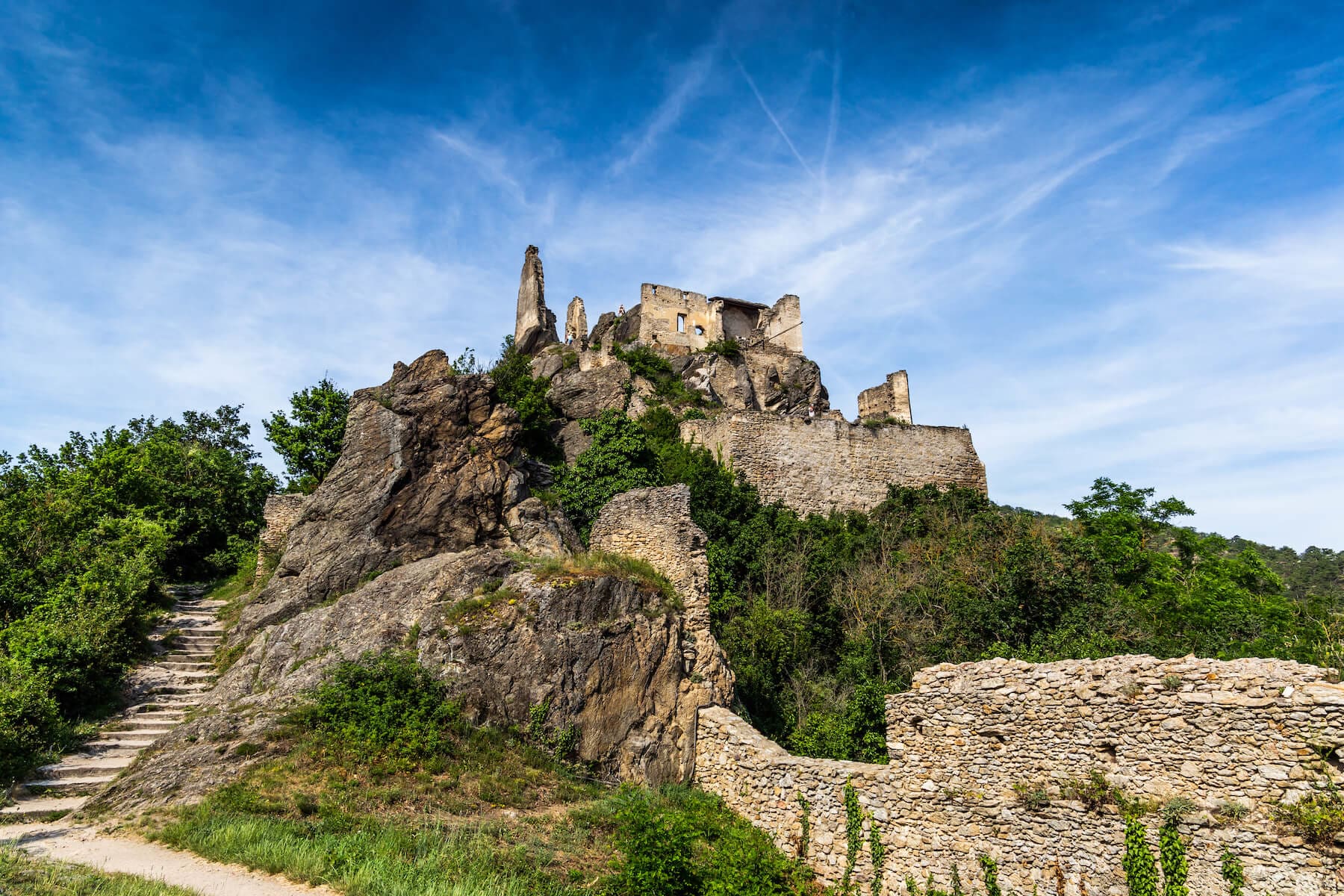
Dürnstein Castle Ruins
 Highlight of Wachau Valley
Highlight of Wachau ValleyHike to the dramatic ruins of a medieval castle built in 1100's.
The hike leading to the castle is steep, but the amazing view you are rewarded with makes it all worth while. The fascinating ruins are extensive and can be freely explored. The castle was made famous by its most illustrious prisoner, King Richard the Lionhearted of England, who was held there for ransom.
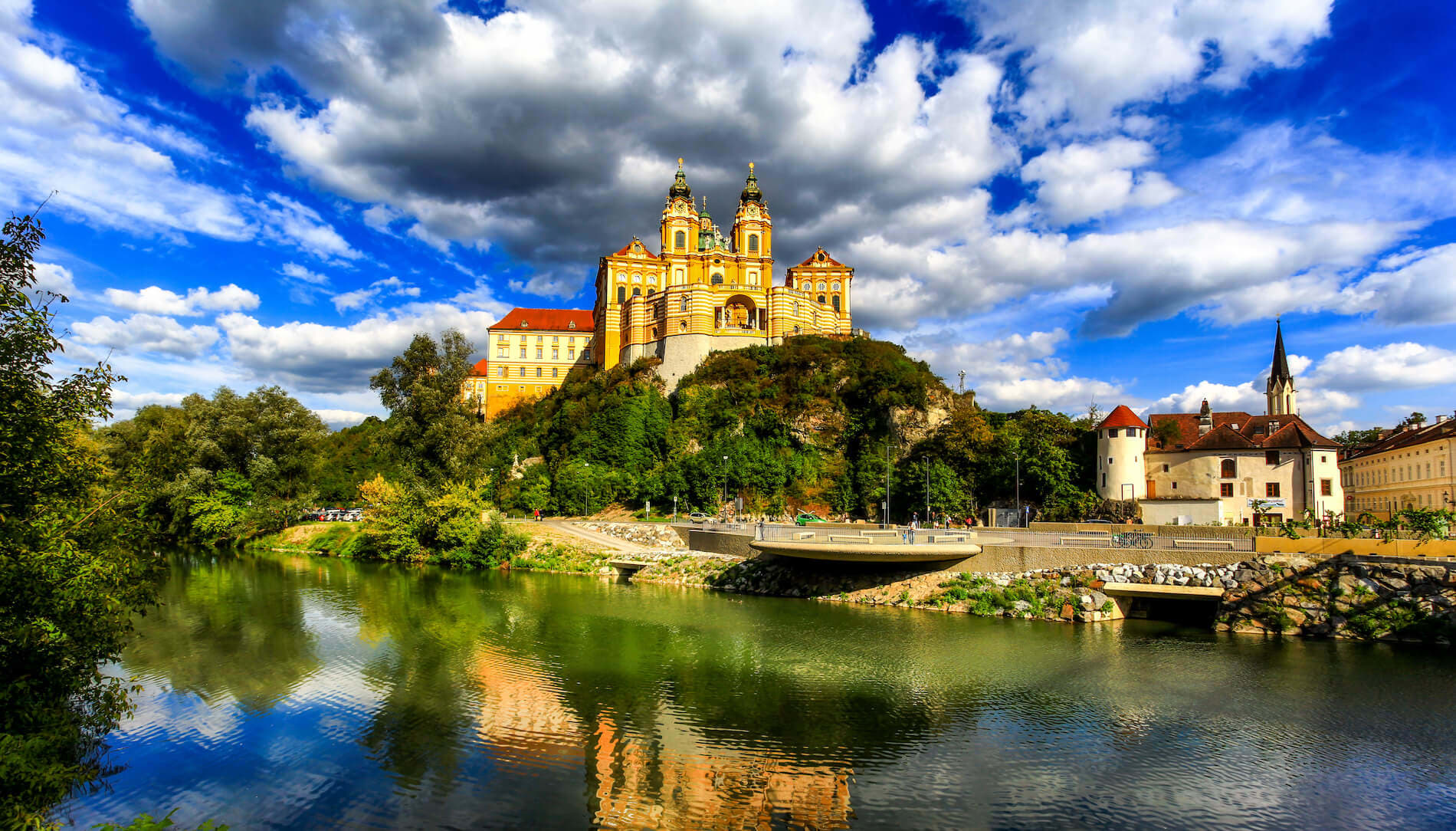
Melk Abbey
 Highlight of Wachau Valley
Highlight of Wachau ValleyTour a huge and splendid Baroque monastery.
Founded in 1089 when the Austrian duke gave one of his castles to Benedictine monks, Melk Abbey is now both a place of pilgrimage and a major tourist attraction. Visitors come for the museum of religious artifacts, the jaw-dropping library, and the sublime church. The town square below the abbey is also a great place for a meal or wine.
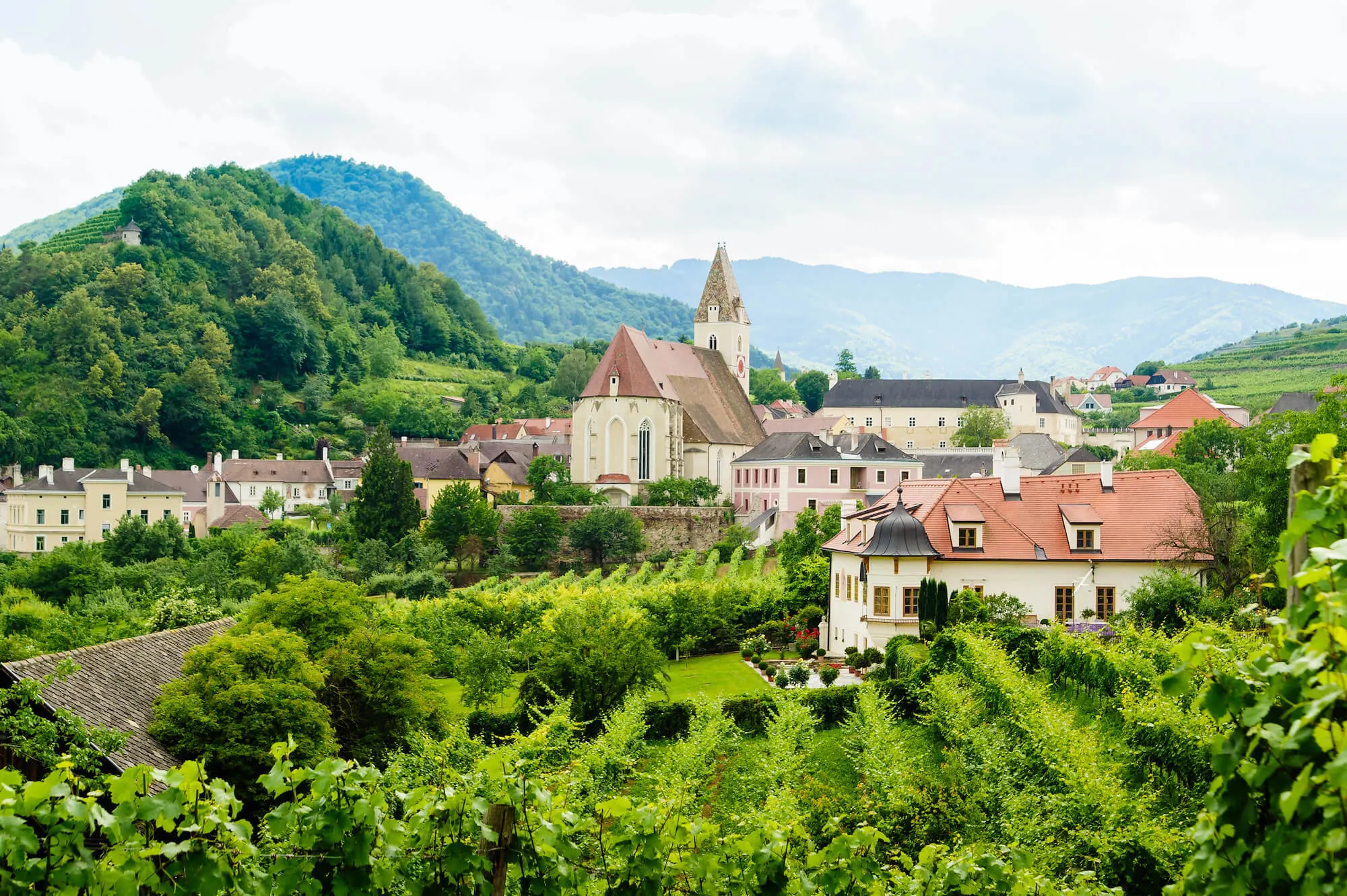
Spitz
 Highlight of Wachau Valley
Highlight of Wachau ValleyStop to taste the wine in a postcard-pretty town surrounded by vineyards.
Spitz is a favorite stop due to its bucolic atmosphere and abundance of wine taverns and restaurants. It is also home to the Tausendeimerberg or "House of a Thousand Buckets" (so named for the abundance of wine fields) and the castle ruins of Hinterhaus, which make for a nice (if steep) hike from the village.

Dürnstein
 Highlight of Wachau Valley
Highlight of Wachau ValleyExplore the twisting narrow lanes of this delightful monastery town.
Named for the castle that overlooks it, Dürnstein is probably the most-visited stop in the Wachau valley. Reached by an ancient tunnel leading from the boat docks, it is well-known for its wine as well as the beautiful blue church tower of its Augustinian monastery.

Dürnstein Castle Ruins
 Highlight of Wachau Valley
Highlight of Wachau ValleyHike to the dramatic ruins of a medieval castle built in 1100's.
The hike leading to the castle is steep, but the amazing view you are rewarded with makes it all worth while. The fascinating ruins are extensive and can be freely explored. The castle was made famous by its most illustrious prisoner, King Richard the Lionhearted of England, who was held there for ransom.

Melk Abbey
 Highlight of Wachau Valley
Highlight of Wachau ValleyTour a huge and splendid Baroque monastery.
Founded in 1089 when the Austrian duke gave one of his castles to Benedictine monks, Melk Abbey is now both a place of pilgrimage and a major tourist attraction. Visitors come for the museum of religious artifacts, the jaw-dropping library, and the sublime church. The town square below the abbey is also a great place for a meal or wine.

Spitz
 Highlight of Wachau Valley
Highlight of Wachau ValleyStop to taste the wine in a postcard-pretty town surrounded by vineyards.
Spitz is a favorite stop due to its bucolic atmosphere and abundance of wine taverns and restaurants. It is also home to the Tausendeimerberg or "House of a Thousand Buckets" (so named for the abundance of wine fields) and the castle ruins of Hinterhaus, which make for a nice (if steep) hike from the village.
prev
next

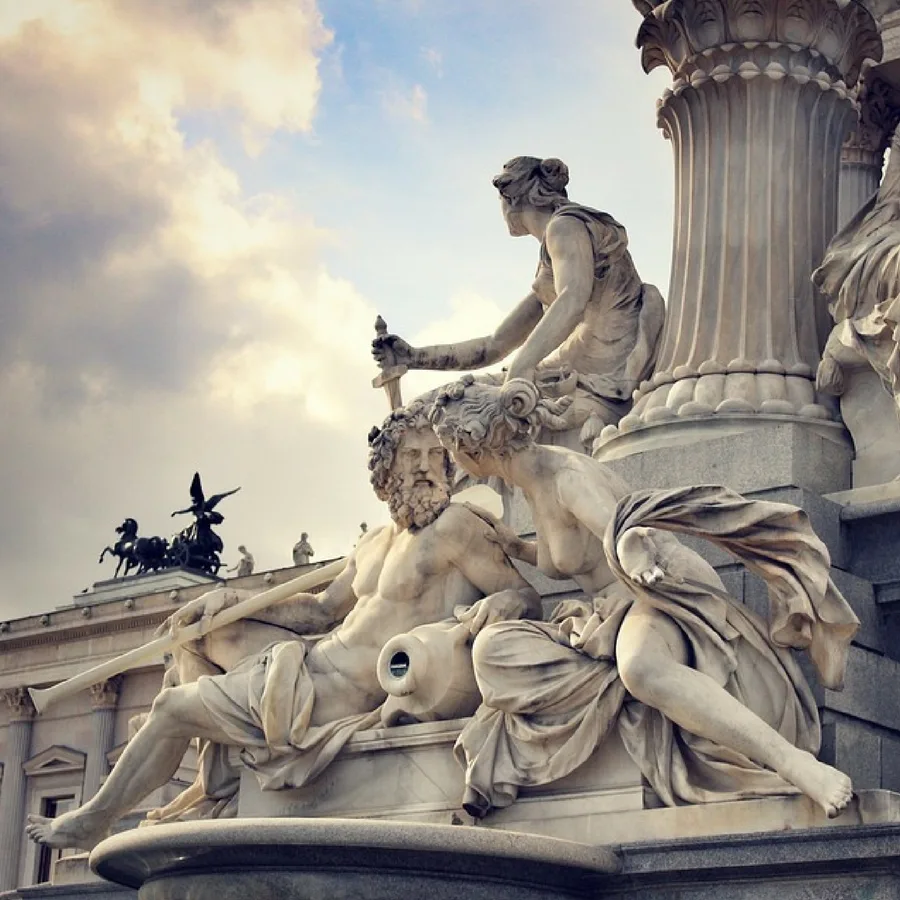
Day 4
Vienna
View More
Day 4
Vienna



Early Morning/Morning
Tour the Schönbrunn Palace
The magnificent Baroque palace of Schönbrunn is most famously associated with Empress Maria Theresa, who lived here surrounded by 16 little archdukes and duchesses who also happened to be her children. On your tour of the palace, you will see how Maria Theresa and other past imperial residents lived. No visit is complete without a stroll in the vast gardens surrounding the palace.

Schönbrunn Zoo
Join local families enjoying one of Europe's best zoos.
Show More

Schönbrunn Gardens
Get lost in the huge imperial gardens.
Show More

Schönbrunn Zoo
Join local families enjoying one of Europe's best zoos.
Show More

Schönbrunn Gardens
Get lost in the huge imperial gardens.
Show More

Schönbrunn Zoo
Join local families enjoying one of Europe's best zoos.
Show More

Schönbrunn Gardens
Get lost in the huge imperial gardens.
Show More
prev
next

Day 4
Vienna
View More

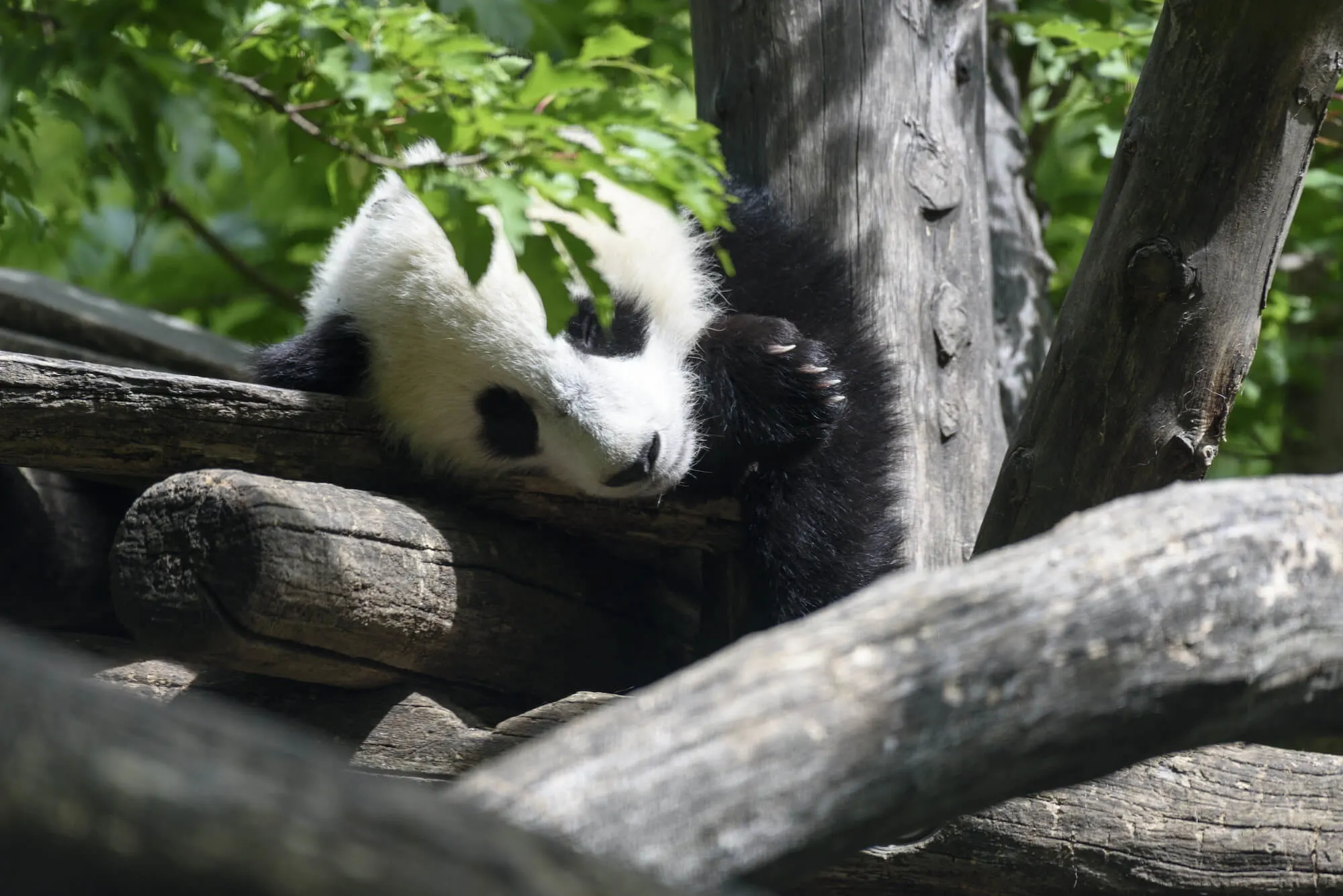
Schönbrunn Zoo
 Highlight of Schönbrunn Palace
Highlight of Schönbrunn PalaceJoin local families enjoying one of Europe's best zoos.
With an entrance directly connected to the Schönbrunn palace gardens, visiting the zoo can be a great addition to any trip to the palace. Founded as an imperial menagerie in 1752, it is the oldest continually operated zoo in the world, and today is home to many rare species such as giant pandas.
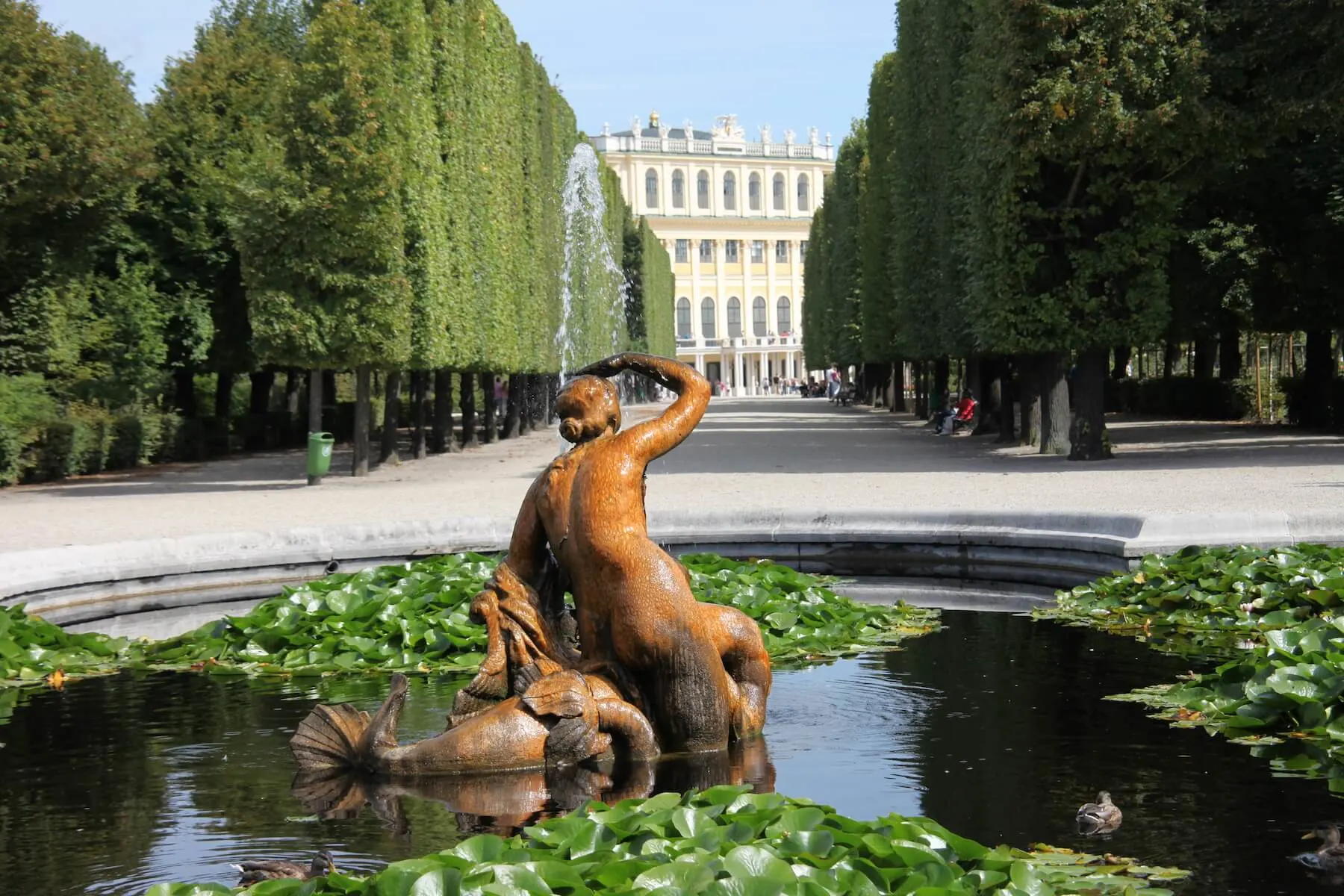
Schönbrunn Gardens
 Highlight of Schönbrunn Palace
Highlight of Schönbrunn PalaceGet lost in the huge imperial gardens.
The beautiful park is a mix of formal gardens and woodlands, and is dotted with enchanting statues & fountains, including a massive fountain of Neptune. The Gloriette pavilion sits on a rise opposite the palace and commands a wonderful view. Kids will love the labyrinth, racing to find the tower at the center of the maze.

Schönbrunn Zoo
 Highlight of Schönbrunn Palace
Highlight of Schönbrunn PalaceJoin local families enjoying one of Europe's best zoos.
With an entrance directly connected to the Schönbrunn palace gardens, visiting the zoo can be a great addition to any trip to the palace. Founded as an imperial menagerie in 1752, it is the oldest continually operated zoo in the world, and today is home to many rare species such as giant pandas.

Schönbrunn Gardens
 Highlight of Schönbrunn Palace
Highlight of Schönbrunn PalaceGet lost in the huge imperial gardens.
The beautiful park is a mix of formal gardens and woodlands, and is dotted with enchanting statues & fountains, including a massive fountain of Neptune. The Gloriette pavilion sits on a rise opposite the palace and commands a wonderful view. Kids will love the labyrinth, racing to find the tower at the center of the maze.

Schönbrunn Zoo
 Highlight of Schönbrunn Palace
Highlight of Schönbrunn PalaceJoin local families enjoying one of Europe's best zoos.
With an entrance directly connected to the Schönbrunn palace gardens, visiting the zoo can be a great addition to any trip to the palace. Founded as an imperial menagerie in 1752, it is the oldest continually operated zoo in the world, and today is home to many rare species such as giant pandas.

Schönbrunn Gardens
 Highlight of Schönbrunn Palace
Highlight of Schönbrunn PalaceGet lost in the huge imperial gardens.
The beautiful park is a mix of formal gardens and woodlands, and is dotted with enchanting statues & fountains, including a massive fountain of Neptune. The Gloriette pavilion sits on a rise opposite the palace and commands a wonderful view. Kids will love the labyrinth, racing to find the tower at the center of the maze.
prev
next

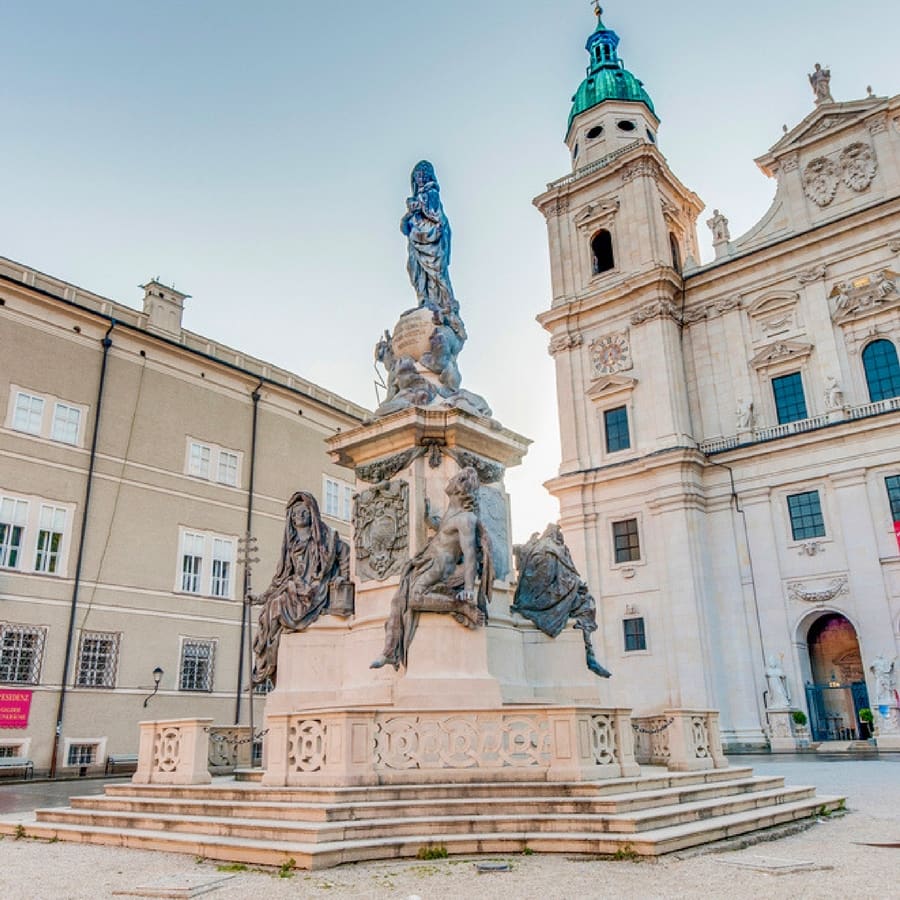
Day 5
Vienna to Salzburg
View More
Day 5
Vienna to Salzburg





9:40 AM
Transfer to Station by Taxi or Public Transport
Your hotel front desk will also be happy to arrange a taxi pick up for you. Vienna taxis are generally reliable and honest, so this is cheaper than a pre-arranged transfer. Your itinerary will provide more information on ordering a taxi, as well as detailed information on navigating the train station and finding your train, making the whole process simple and stress-free.

Day 5
Vienna to Salzburg
View More


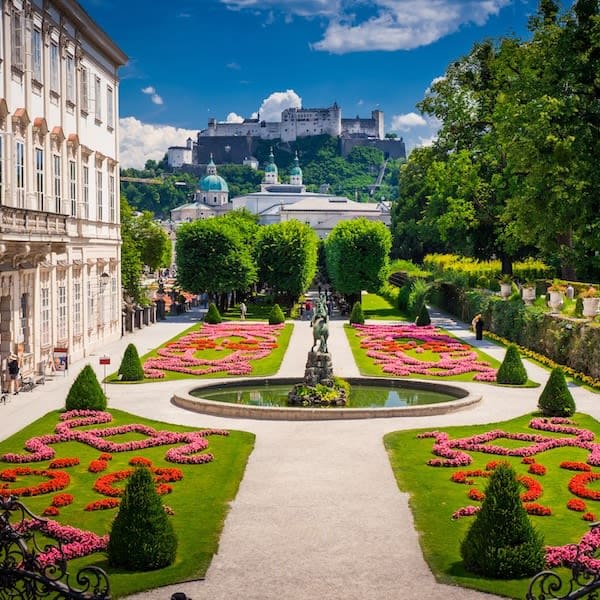
Day 6
Salzburg
View More
Day 6
Salzburg



Morning
Explore the Neustadt and Mirabell Palace Gardens
On the right bank of Salzach river lies the Neustadt (New Town). Although it may be just a bit newer than the Altstadt, it still boasts hundreds of years of history in it's winding and narrow Medieval lanes. The Mirabell Palace, a Baroque masterpiece built in 1606 by the Prince-Archbishop of Salzburg for his concubine, is the most famous site in the Neustadt. As impressive as the palace and its interior are, the elaborate gardens surrounding the palace are more famous than the palace itself.

Linzer Gasse
Hang out with locals on this street lined by shopping and restaurants.
Show More

St. Sebastian's cemetery
Wander off of the beaten path to find one of Salzburg's hidden treasures, St. Sebastian's cemetery.
Show More

Mirabell Palace Gardens
Stroll this tranquil garden amidst the city hubbub and sing "Do-Re-Me" .
Show More

Linzer Gasse
Hang out with locals on this street lined by shopping and restaurants.
Show More

St. Sebastian's cemetery
Wander off of the beaten path to find one of Salzburg's hidden treasures, St. Sebastian's cemetery.
Show More

Mirabell Palace Gardens
Stroll this tranquil garden amidst the city hubbub and sing "Do-Re-Me" .
Show More

Linzer Gasse
Hang out with locals on this street lined by shopping and restaurants.
Show More
prev
next

Day 6
Salzburg
View More

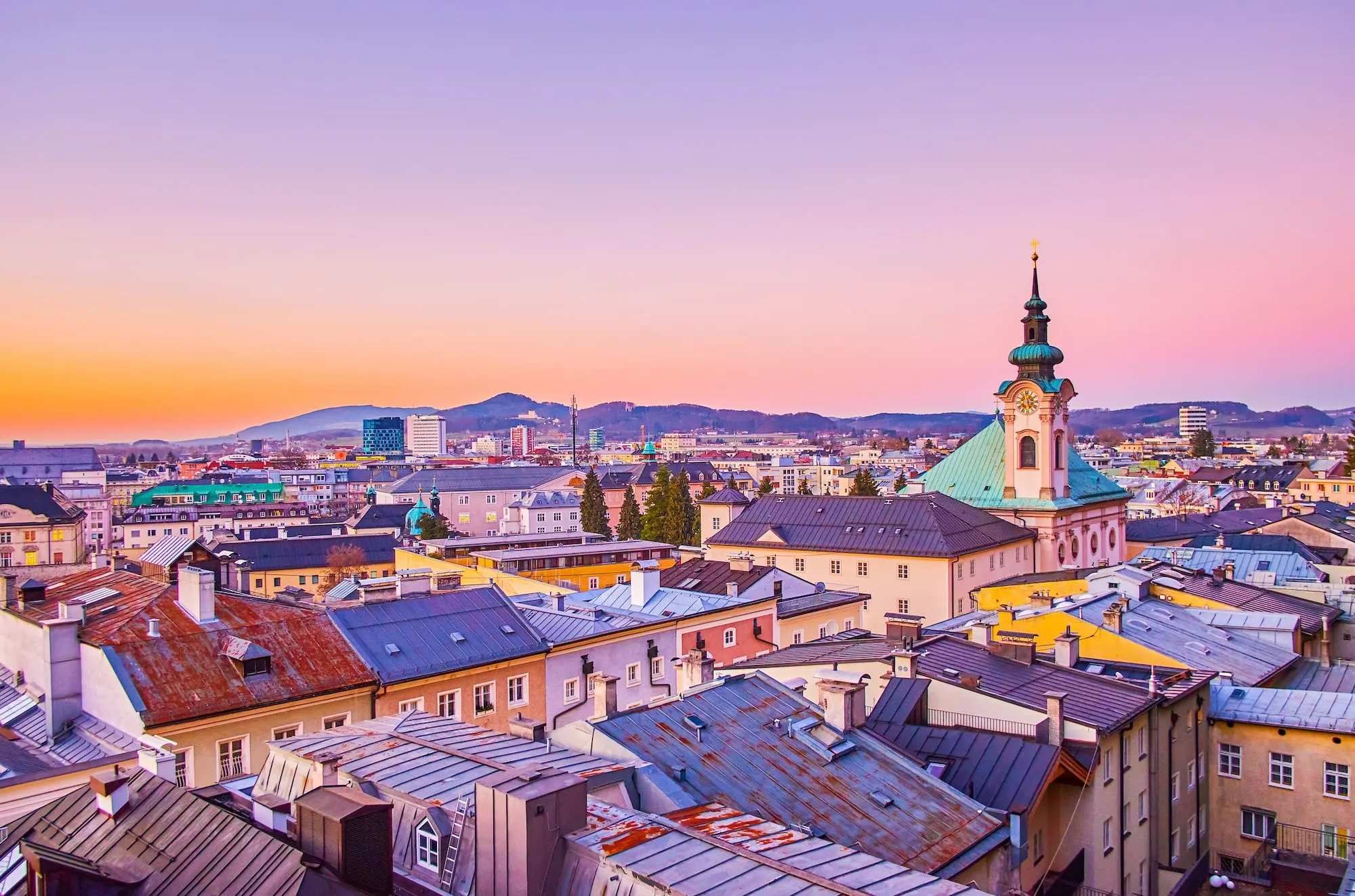
Linzer Gasse
 Highlight of Neustadt
Highlight of NeustadtHang out with locals on this street lined by shopping and restaurants.
The Linzer Gasse and the streets surrounding it, with their historic storefronts and a multitude of restaurants and old guesthouses, give the Altstadt a run for its money in terms of liveliness and charm. One of the best views in Salzburg is hidden near the Linzer Gasse. Just look for the gateway passage, which is located on the right side of the Linzer Gasse if you are coming from the river and head up the mountain side.
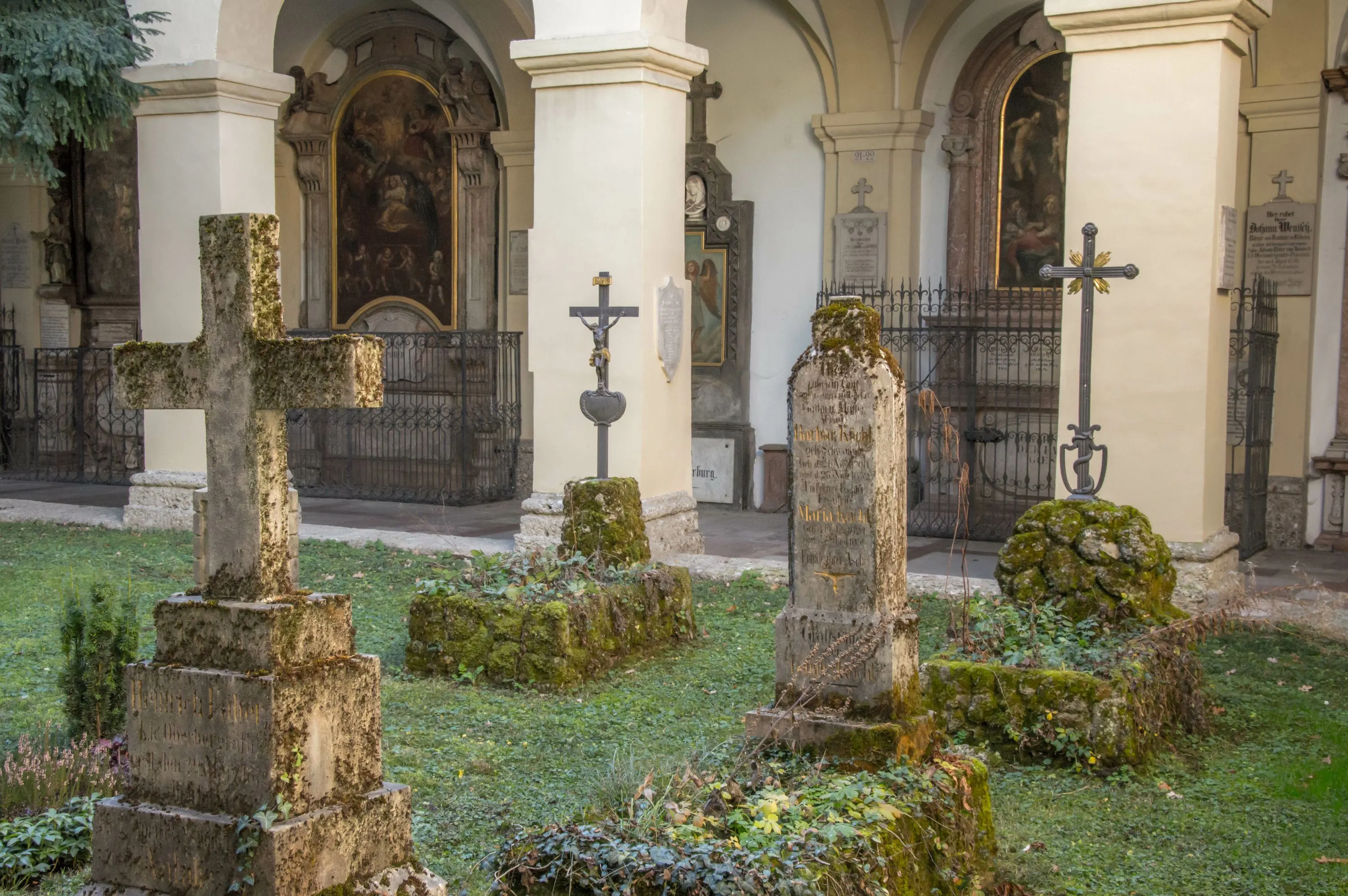
St. Sebastian's cemetery
 Highlight of Neustadt
Highlight of NeustadtWander off of the beaten path to find one of Salzburg's hidden treasures, St. Sebastian's cemetery.
The peaceful cemetery is the resting place of many prominent Salzburgers, including Mozart's wife and father. The cemetery is lined by a cloister passageway, and in the center of the cemetery lies the magnificent mausoleum of the Prince Archbishop Wolf Dietrich. To find the cemetery just walk towards the church tower on the Linzer Gasse. The cemetery is located behind the church. There is usually an entrance open to the right of the church, but if that is closed, go the sidestreet to the left of the church (where you see the archway). You will find another entrance on the right side of the courtyard.
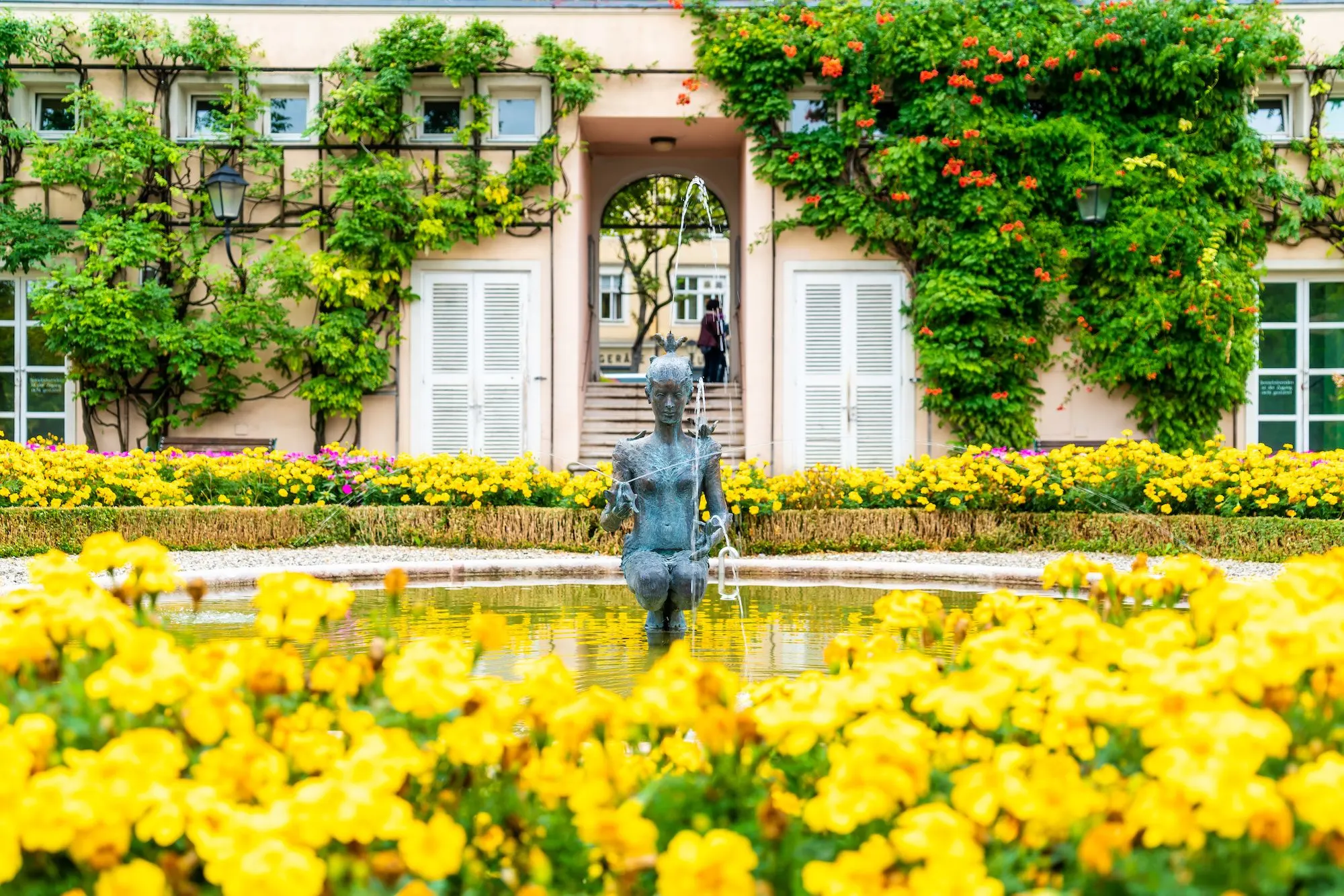
Mirabell Palace Gardens
 Highlight of Neustadt
Highlight of NeustadtStroll this tranquil garden amidst the city hubbub and sing "Do-Re-Me" .
Within the gardens, you will discover not only greenery and flowers but also statues of a pegasus, unicorns, lions and other exotic animals, as well as a gnome garden, grand staircases, fountains, and other picturesque spots. Sound of Music fans will recognize it, as this is where several parts of the "Do-Re-Me" song were filmed. Maria and the children march around the pegasus statue and fountain, race through the lattice garden tunnels, pose at the garden gates, and pet the gnomes on the head. Not much of the palace interior is open to visitors, however, the best part of the palace, a marble staircase lined by Raphael Donner statues, is open to those who know how to find it. The corridor to the staircase can be found in the passage that connects the palace courtyard to the gardens and the Pegasus fountain. If you are coming from the courtyard, the door to the corridor is on your right. You will find the staircase within a few steps.

Linzer Gasse
 Highlight of Neustadt
Highlight of NeustadtHang out with locals on this street lined by shopping and restaurants.
The Linzer Gasse and the streets surrounding it, with their historic storefronts and a multitude of restaurants and old guesthouses, give the Altstadt a run for its money in terms of liveliness and charm. One of the best views in Salzburg is hidden near the Linzer Gasse. Just look for the gateway passage, which is located on the right side of the Linzer Gasse if you are coming from the river and head up the mountain side.

St. Sebastian's cemetery
 Highlight of Neustadt
Highlight of NeustadtWander off of the beaten path to find one of Salzburg's hidden treasures, St. Sebastian's cemetery.
The peaceful cemetery is the resting place of many prominent Salzburgers, including Mozart's wife and father. The cemetery is lined by a cloister passageway, and in the center of the cemetery lies the magnificent mausoleum of the Prince Archbishop Wolf Dietrich. To find the cemetery just walk towards the church tower on the Linzer Gasse. The cemetery is located behind the church. There is usually an entrance open to the right of the church, but if that is closed, go the sidestreet to the left of the church (where you see the archway). You will find another entrance on the right side of the courtyard.

Mirabell Palace Gardens
 Highlight of Neustadt
Highlight of NeustadtStroll this tranquil garden amidst the city hubbub and sing "Do-Re-Me" .
Within the gardens, you will discover not only greenery and flowers but also statues of a pegasus, unicorns, lions and other exotic animals, as well as a gnome garden, grand staircases, fountains, and other picturesque spots. Sound of Music fans will recognize it, as this is where several parts of the "Do-Re-Me" song were filmed. Maria and the children march around the pegasus statue and fountain, race through the lattice garden tunnels, pose at the garden gates, and pet the gnomes on the head. Not much of the palace interior is open to visitors, however, the best part of the palace, a marble staircase lined by Raphael Donner statues, is open to those who know how to find it. The corridor to the staircase can be found in the passage that connects the palace courtyard to the gardens and the Pegasus fountain. If you are coming from the courtyard, the door to the corridor is on your right. You will find the staircase within a few steps.

Linzer Gasse
 Highlight of Neustadt
Highlight of NeustadtHang out with locals on this street lined by shopping and restaurants.
The Linzer Gasse and the streets surrounding it, with their historic storefronts and a multitude of restaurants and old guesthouses, give the Altstadt a run for its money in terms of liveliness and charm. One of the best views in Salzburg is hidden near the Linzer Gasse. Just look for the gateway passage, which is located on the right side of the Linzer Gasse if you are coming from the river and head up the mountain side.
prev
next

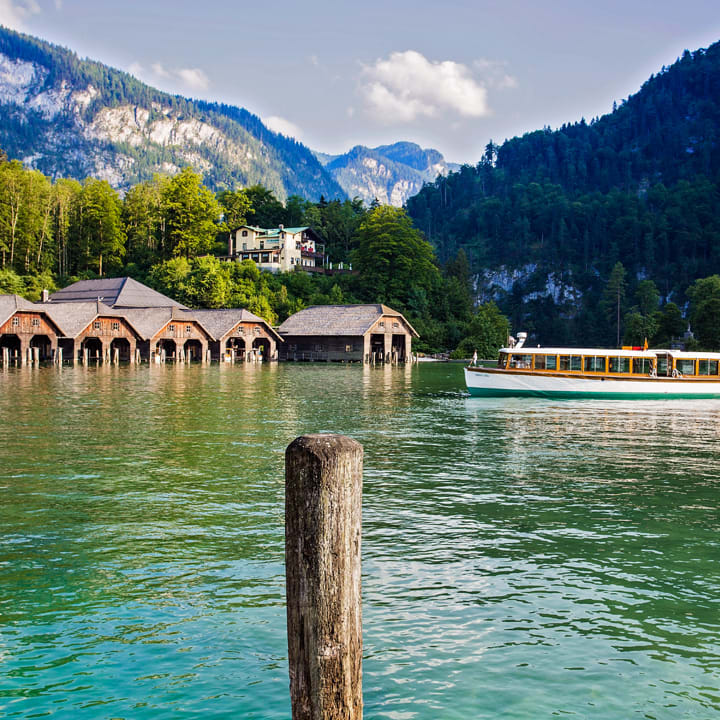
Day 7
Salzburg
View More
Day 7
Salzburg


Early Morning to Mid-Day
Excursion to the Königssee (King's Lake)
The breathtakingly beautiful Königssee (King's Lake) is the deepest lake in the Alps and is surrounded by steep mountains. Taking a cruise on the lake is an unforgettable experience. The boat will take you to the red-onion domed Kloster St. Bartolomä, where you then take a relaxing and enchanting walk along the forested lakeshore. For serious hikers, you can also continue on the boat to the far end of the lake, and then take a hike to a dramatic waterfall.

Obersee
Take a short hike to this stunning lake nestled within the mountains.
Show More

St Bartholomew's Church
Hop off the boat for a pleasant and easy walk along the lake shore near this onion-domed church.
Show More

Königssee Cruise
Relax on an unforgettable cruise across the lake, hopping on an off when you please.
Show More

Malerwinkl
Venture a little further to find a perfect view of the lake.
Show More

Jennerbahn Cable Car
Take an exhilarating ride into the Alpine peaks above the lake.
Show More

Obersee
Take a short hike to this stunning lake nestled within the mountains.
Show More

St Bartholomew's Church
Hop off the boat for a pleasant and easy walk along the lake shore near this onion-domed church.
Show More

Königssee Cruise
Relax on an unforgettable cruise across the lake, hopping on an off when you please.
Show More

Malerwinkl
Venture a little further to find a perfect view of the lake.
Show More

Jennerbahn Cable Car
Take an exhilarating ride into the Alpine peaks above the lake.
Show More

Obersee
Take a short hike to this stunning lake nestled within the mountains.
Show More
prev
next

Day 7
Salzburg
View More

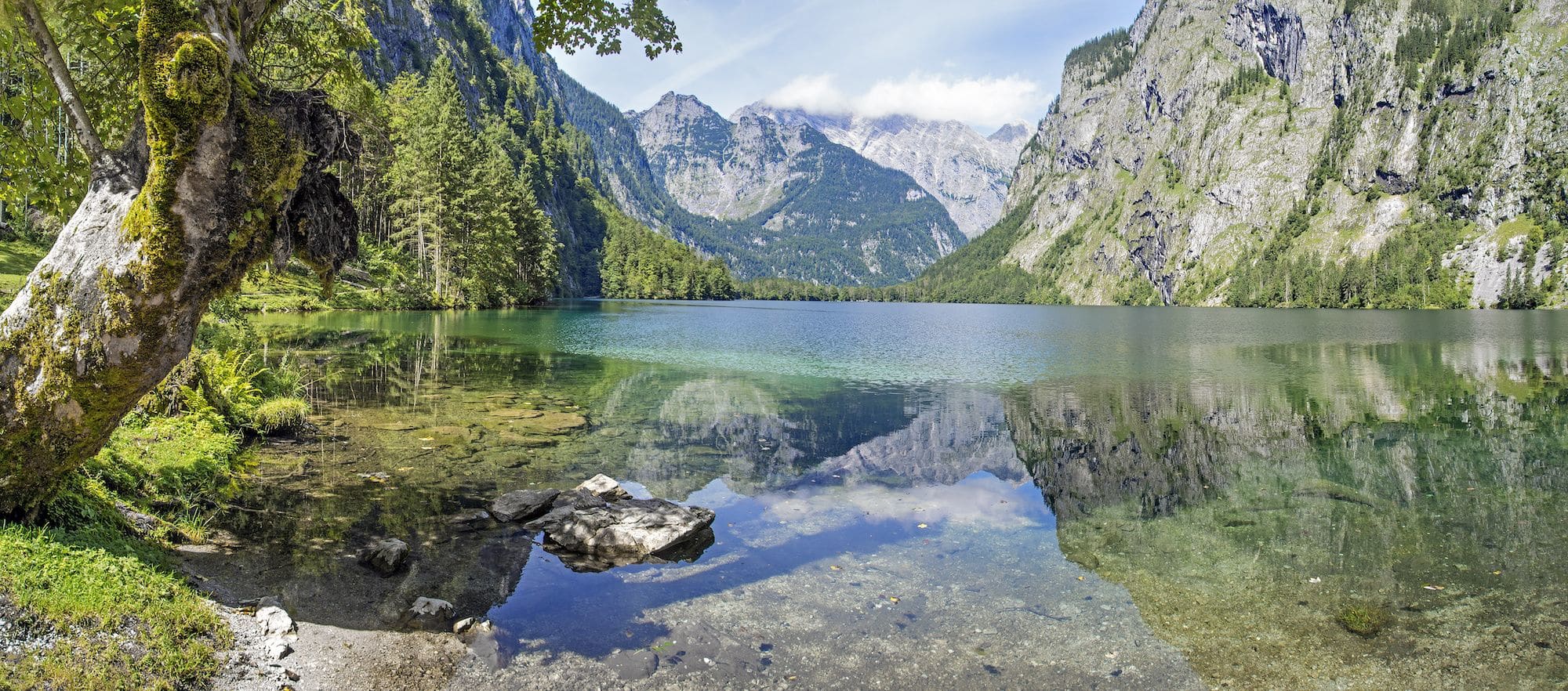
Obersee
 Highlight of Königssee Lake
Highlight of Königssee LakeTake a short hike to this stunning lake nestled within the mountains.
You can take a quick jaunt to the Obersee, or better yet, you can take a 5 miles hike to a waterfall above the lake. The trail is well-maintained and well-traveled, although rocky and steep at times. The hike begins with a fairly flat and easy walk from the boat docks to the Obersee lake. You will then follow a trail along the right shore of the lake. The trail becomes rocky and steep, and you must ascend about 250 feet. At the high points of the trail, you will have a beautiful view of the lake below and surrounding mountains. You will then descend and reach the far end of the lake, where you will enjoy another beautiful view. You will then continue hiking towards the end of the valley, climbing another approximately 350 feet to reach the end of the valley, where you will see the waterfalls. Keep in mind that at the end of summer or in fall the waterfall may not be very impressive.
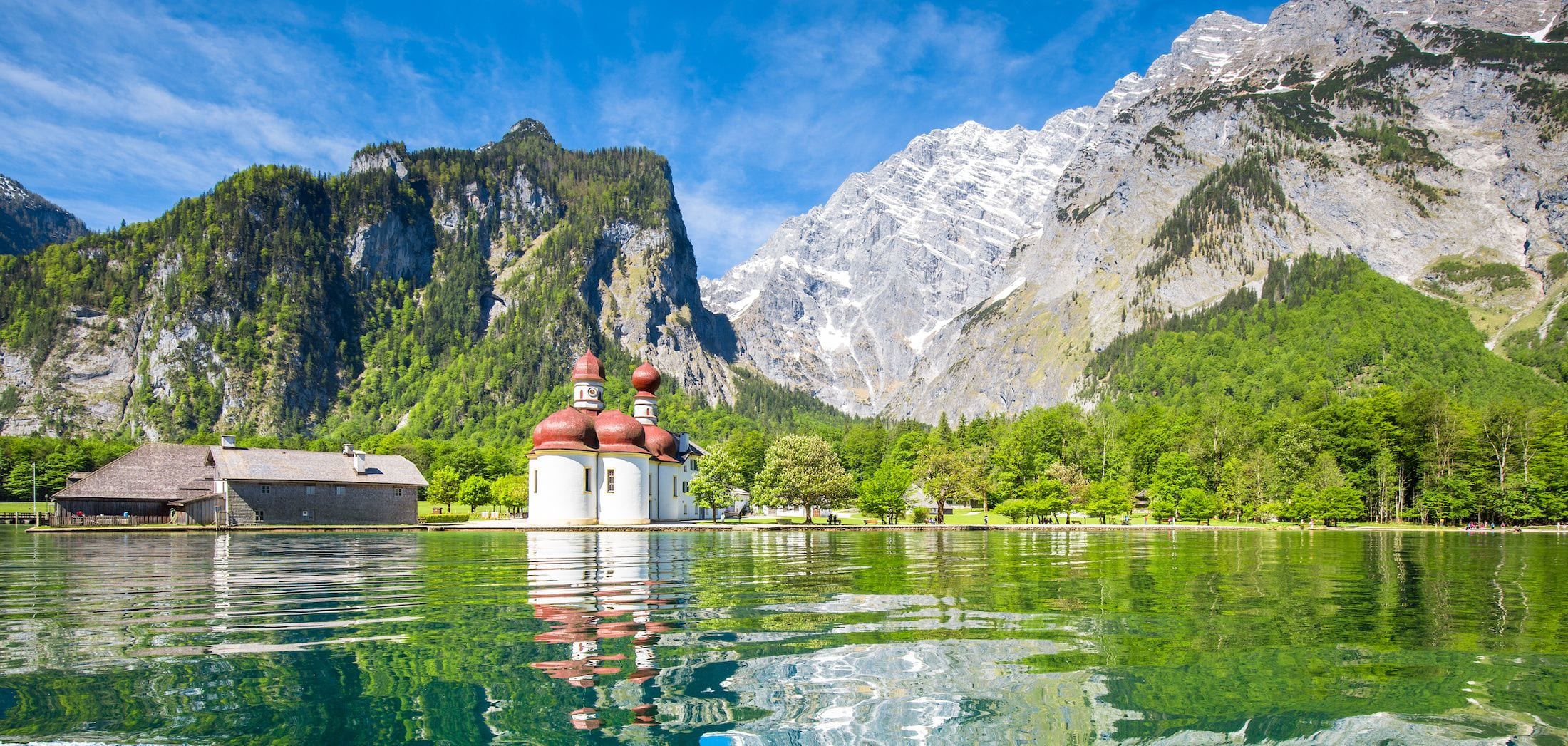
St Bartholomew's Church
 Highlight of Königssee Lake
Highlight of Königssee LakeHop off the boat for a pleasant and easy walk along the lake shore near this onion-domed church.
To take this easy, flat, but very beautiful hike, from the boat docks, follow the orange signs for the "St. Bartholomä-Rundweg". You will make a circle on a well-maintained trail, first walking along the lakeshore for about half a mile, and then turn left into the forest. Continue following the signs for the Rundweg, taking another left after about 350 yards, and returning to the docks in a little less than half a mile.
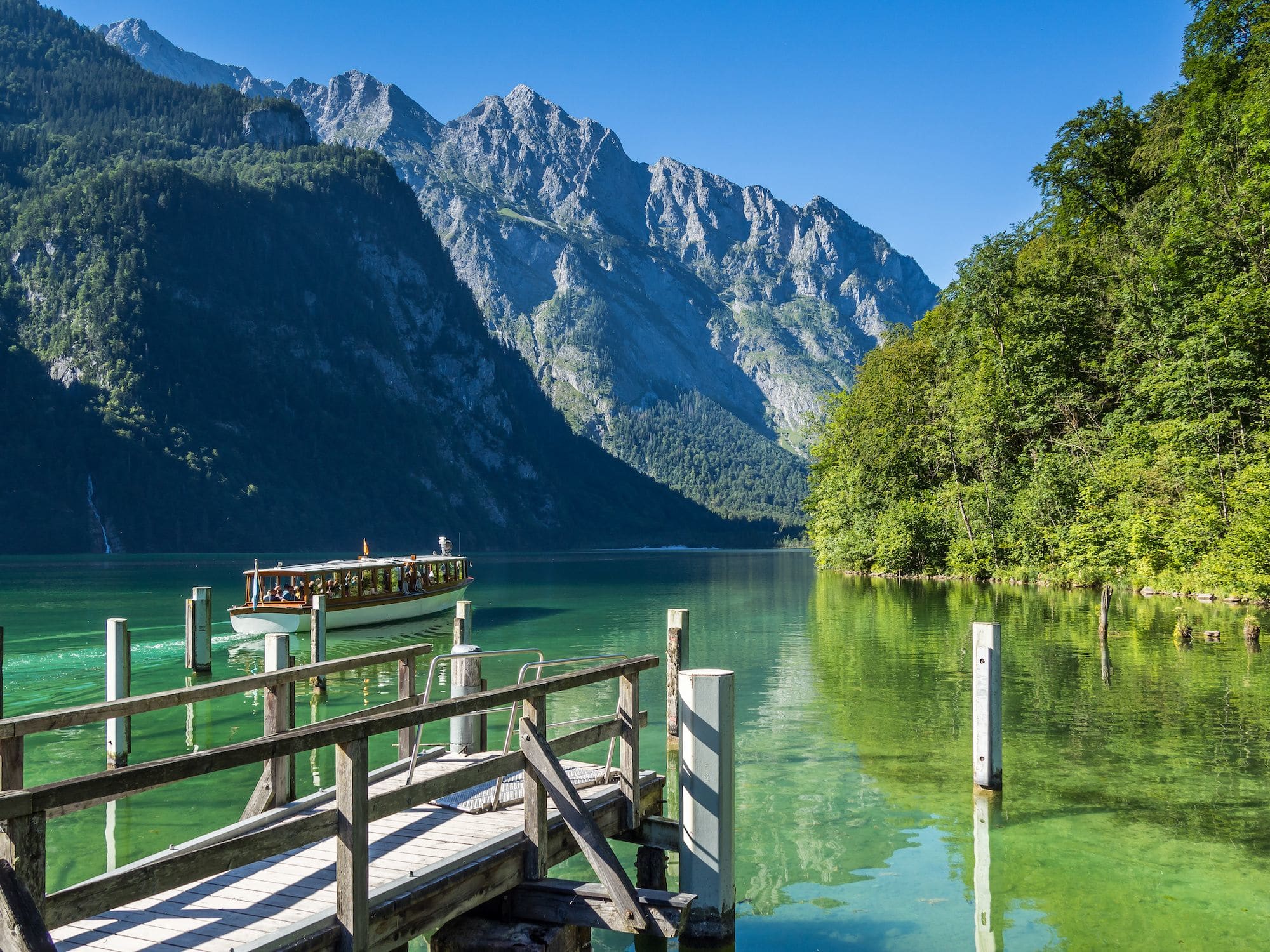
Königssee Cruise
 Highlight of Königssee Lake
Highlight of Königssee LakeRelax on an unforgettable cruise across the lake, hopping on an off when you please.
The cruises are made all the more enjoyable as the electric boats are almost completely quiet. Nothing will distract you for the atmosphere and scenery. Cruises occur all year long unless the lake is iced over. Tickets are sold directly at the docks, although getting there early is highly recommended to avoid long lines.

Malerwinkl
 Highlight of Königssee Lake
Highlight of Königssee LakeVenture a little further to find a perfect view of the lake.
The Malerwinkl (i.e. the Painters Angle) is less than a mile walk from the boat docks and offers a picture-frame view of the lake. You can walk down to the water and soak your feet. After enjoying the view, you can head back, or take a strenuous, approximately hour-long hike to the Jennerbahn cable car station. Just follow the signs for the Malerwinkl-Rundweg and the Jennerbahn-Talstation. This is a trail for experienced hikers with proper footwear, which includes a climb of about 400 feet.
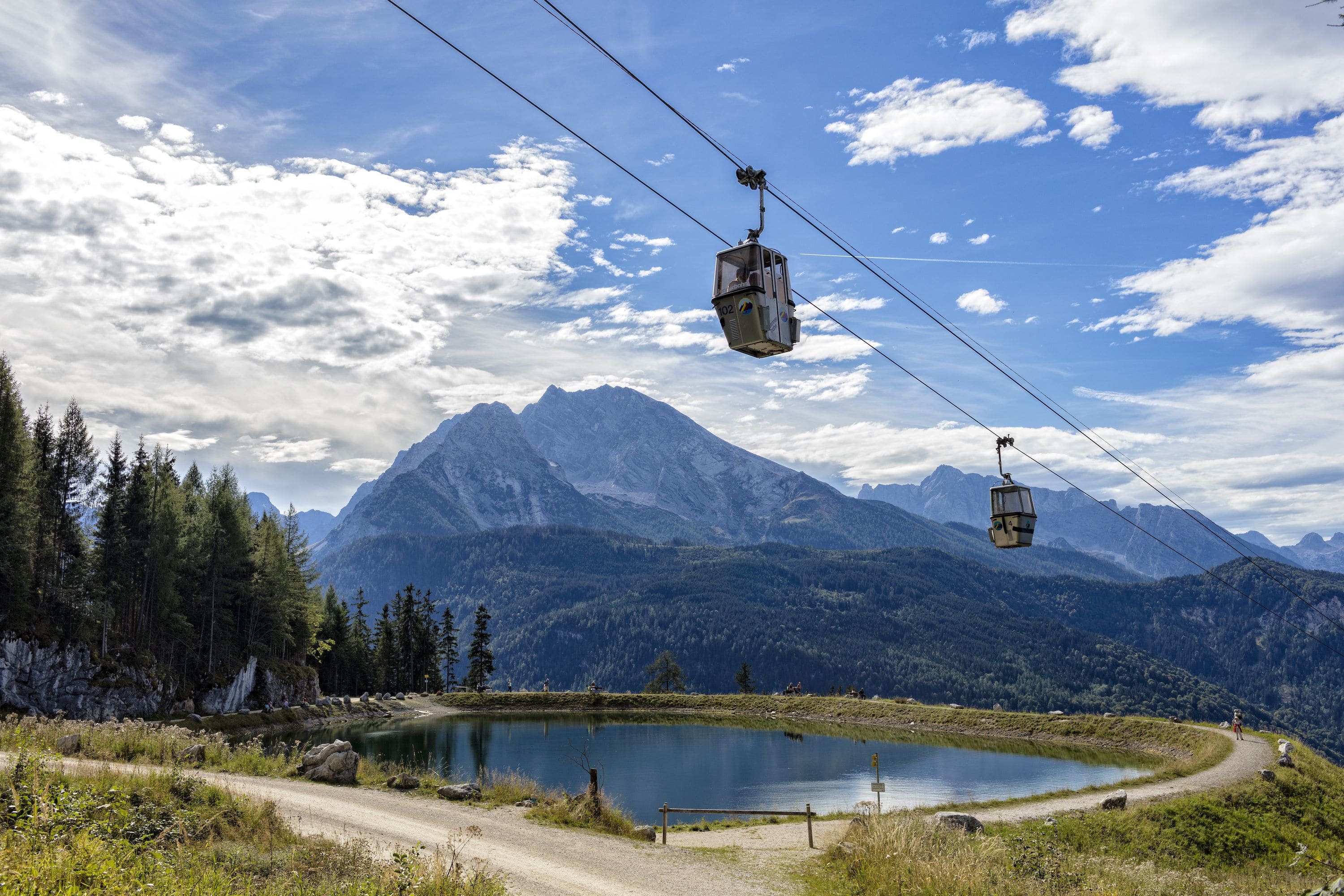
Jennerbahn Cable Car
 Highlight of Königssee Lake
Highlight of Königssee LakeTake an exhilarating ride into the Alpine peaks above the lake.
You will enjoy amazing views of the lake and the surrounding Bavarian Alps. If you are up for it, you can even hike in the mountains as well, or ski in the winter. You can board the Jennerbahn cable car near the same parking area and bus stop which services the lake. It costs approx. 27.50 EUR for an adult roundtrip ticket to the top. You can save money by hiking back down, but this is only recommended for experienced hikers with good footwear.

Obersee
 Highlight of Königssee Lake
Highlight of Königssee LakeTake a short hike to this stunning lake nestled within the mountains.
You can take a quick jaunt to the Obersee, or better yet, you can take a 5 miles hike to a waterfall above the lake. The trail is well-maintained and well-traveled, although rocky and steep at times. The hike begins with a fairly flat and easy walk from the boat docks to the Obersee lake. You will then follow a trail along the right shore of the lake. The trail becomes rocky and steep, and you must ascend about 250 feet. At the high points of the trail, you will have a beautiful view of the lake below and surrounding mountains. You will then descend and reach the far end of the lake, where you will enjoy another beautiful view. You will then continue hiking towards the end of the valley, climbing another approximately 350 feet to reach the end of the valley, where you will see the waterfalls. Keep in mind that at the end of summer or in fall the waterfall may not be very impressive.

St Bartholomew's Church
 Highlight of Königssee Lake
Highlight of Königssee LakeHop off the boat for a pleasant and easy walk along the lake shore near this onion-domed church.
To take this easy, flat, but very beautiful hike, from the boat docks, follow the orange signs for the "St. Bartholomä-Rundweg". You will make a circle on a well-maintained trail, first walking along the lakeshore for about half a mile, and then turn left into the forest. Continue following the signs for the Rundweg, taking another left after about 350 yards, and returning to the docks in a little less than half a mile.

Königssee Cruise
 Highlight of Königssee Lake
Highlight of Königssee LakeRelax on an unforgettable cruise across the lake, hopping on an off when you please.
The cruises are made all the more enjoyable as the electric boats are almost completely quiet. Nothing will distract you for the atmosphere and scenery. Cruises occur all year long unless the lake is iced over. Tickets are sold directly at the docks, although getting there early is highly recommended to avoid long lines.

Malerwinkl
 Highlight of Königssee Lake
Highlight of Königssee LakeVenture a little further to find a perfect view of the lake.
The Malerwinkl (i.e. the Painters Angle) is less than a mile walk from the boat docks and offers a picture-frame view of the lake. You can walk down to the water and soak your feet. After enjoying the view, you can head back, or take a strenuous, approximately hour-long hike to the Jennerbahn cable car station. Just follow the signs for the Malerwinkl-Rundweg and the Jennerbahn-Talstation. This is a trail for experienced hikers with proper footwear, which includes a climb of about 400 feet.

Jennerbahn Cable Car
 Highlight of Königssee Lake
Highlight of Königssee LakeTake an exhilarating ride into the Alpine peaks above the lake.
You will enjoy amazing views of the lake and the surrounding Bavarian Alps. If you are up for it, you can even hike in the mountains as well, or ski in the winter. You can board the Jennerbahn cable car near the same parking area and bus stop which services the lake. It costs approx. 27.50 EUR for an adult roundtrip ticket to the top. You can save money by hiking back down, but this is only recommended for experienced hikers with good footwear.

Obersee
 Highlight of Königssee Lake
Highlight of Königssee LakeTake a short hike to this stunning lake nestled within the mountains.
You can take a quick jaunt to the Obersee, or better yet, you can take a 5 miles hike to a waterfall above the lake. The trail is well-maintained and well-traveled, although rocky and steep at times. The hike begins with a fairly flat and easy walk from the boat docks to the Obersee lake. You will then follow a trail along the right shore of the lake. The trail becomes rocky and steep, and you must ascend about 250 feet. At the high points of the trail, you will have a beautiful view of the lake below and surrounding mountains. You will then descend and reach the far end of the lake, where you will enjoy another beautiful view. You will then continue hiking towards the end of the valley, climbing another approximately 350 feet to reach the end of the valley, where you will see the waterfalls. Keep in mind that at the end of summer or in fall the waterfall may not be very impressive.
prev
next

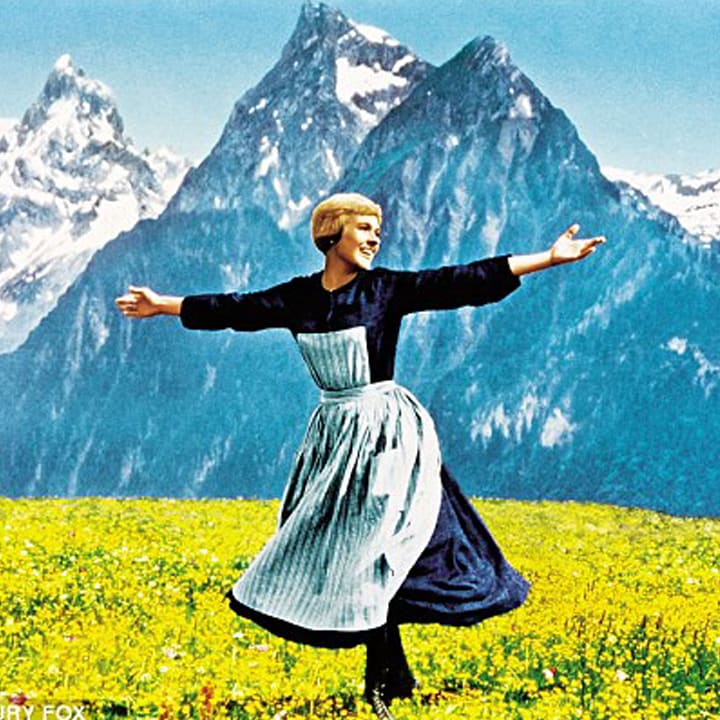
Day 8
Salzburg
View More
Day 8
Salzburg


9:15 AM - 1:15 PM
Sound of Music Guided Bus Tour
In this approximately 4 hour tour by motor coach, you will relive the most magical moments from the Sound of Music while taking in the breathtaking beauty of Salzburg's surroundings, including the landscape which inspired Julie Andrews to burst into song at the beginning of the movie. As you enjoy the tour, you will relax and listen to the original Sound of Music soundtrack. On the tour, you will see the places where the movie was filmed, and will also learn how these places tie into Salzburg's history.

Hellbrunn Palace
Hellbrunn Palace is a picturesque palace surrounded by even more beautiful gardens. The early baroque palace was built exclusively for the purpose of entertainment, as the Prince-Bishop would actually return to Salzburg in the evening.
Show More

Hellbrunn Palace
Hellbrunn Palace is a picturesque palace surrounded by even more beautiful gardens. The early baroque palace was built exclusively for the purpose of entertainment, as the Prince-Bishop would actually return to Salzburg in the evening.
Show More

Hellbrunn Palace
Hellbrunn Palace is a picturesque palace surrounded by even more beautiful gardens. The early baroque palace was built exclusively for the purpose of entertainment, as the Prince-Bishop would actually return to Salzburg in the evening.
Show More

Hellbrunn Palace
Hellbrunn Palace is a picturesque palace surrounded by even more beautiful gardens. The early baroque palace was built exclusively for the purpose of entertainment, as the Prince-Bishop would actually return to Salzburg in the evening.
Show More

Hellbrunn Palace
Hellbrunn Palace is a picturesque palace surrounded by even more beautiful gardens. The early baroque palace was built exclusively for the purpose of entertainment, as the Prince-Bishop would actually return to Salzburg in the evening.
Show More
prev
next

Day 8
Salzburg
View More

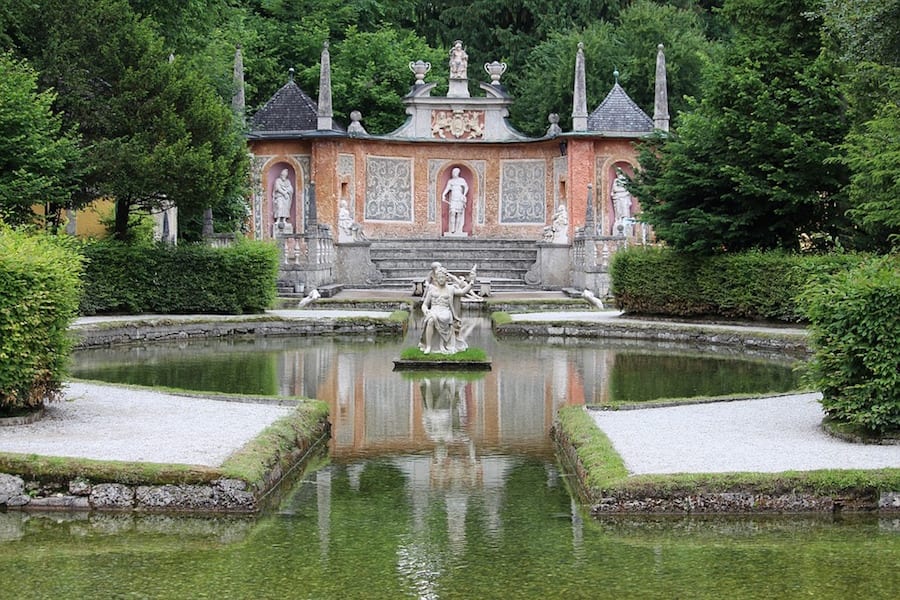
Hellbrunn Palace
 Highlight of Sound of Music Guided Bus Tour
Highlight of Sound of Music Guided Bus TourHellbrunn Palace is a picturesque palace surrounded by even more beautiful gardens. The early baroque palace was built exclusively for the purpose of entertainment, as the Prince-Bishop would actually return to Salzburg in the evening.
Built as a summer palace by Salzburg's Prince-Bishop, Markus Sittikus, the Schloss Hellbrunn is a picturesque palace surrounded by even more beautiful gardens. The early Baroque palace was built exclusively for the purpose of entertainment, as the Prince-Bishop would actually return to Salzburg in the evening. It can be toured with an audio guide and includes several beautiful frescoed ceilings. There is a great deal to discover in the gardens - hidden grottos, clever statues, reflecting pools, as well as flora and fauna. What's more, the gardens are also home to famous Wasserspiele, trick water fountains that never fail to delight, astonish, and befuddle. The fountains were actually built with the express purpose of playing practical jokes on guests, and they continue to provide plenty of amusement today.

Hellbrunn Palace
 Highlight of Sound of Music Guided Bus Tour
Highlight of Sound of Music Guided Bus TourHellbrunn Palace is a picturesque palace surrounded by even more beautiful gardens. The early baroque palace was built exclusively for the purpose of entertainment, as the Prince-Bishop would actually return to Salzburg in the evening.
Built as a summer palace by Salzburg's Prince-Bishop, Markus Sittikus, the Schloss Hellbrunn is a picturesque palace surrounded by even more beautiful gardens. The early Baroque palace was built exclusively for the purpose of entertainment, as the Prince-Bishop would actually return to Salzburg in the evening. It can be toured with an audio guide and includes several beautiful frescoed ceilings. There is a great deal to discover in the gardens - hidden grottos, clever statues, reflecting pools, as well as flora and fauna. What's more, the gardens are also home to famous Wasserspiele, trick water fountains that never fail to delight, astonish, and befuddle. The fountains were actually built with the express purpose of playing practical jokes on guests, and they continue to provide plenty of amusement today.

Hellbrunn Palace
 Highlight of Sound of Music Guided Bus Tour
Highlight of Sound of Music Guided Bus TourHellbrunn Palace is a picturesque palace surrounded by even more beautiful gardens. The early baroque palace was built exclusively for the purpose of entertainment, as the Prince-Bishop would actually return to Salzburg in the evening.
Built as a summer palace by Salzburg's Prince-Bishop, Markus Sittikus, the Schloss Hellbrunn is a picturesque palace surrounded by even more beautiful gardens. The early Baroque palace was built exclusively for the purpose of entertainment, as the Prince-Bishop would actually return to Salzburg in the evening. It can be toured with an audio guide and includes several beautiful frescoed ceilings. There is a great deal to discover in the gardens - hidden grottos, clever statues, reflecting pools, as well as flora and fauna. What's more, the gardens are also home to famous Wasserspiele, trick water fountains that never fail to delight, astonish, and befuddle. The fountains were actually built with the express purpose of playing practical jokes on guests, and they continue to provide plenty of amusement today.

Hellbrunn Palace
 Highlight of Sound of Music Guided Bus Tour
Highlight of Sound of Music Guided Bus TourHellbrunn Palace is a picturesque palace surrounded by even more beautiful gardens. The early baroque palace was built exclusively for the purpose of entertainment, as the Prince-Bishop would actually return to Salzburg in the evening.
Built as a summer palace by Salzburg's Prince-Bishop, Markus Sittikus, the Schloss Hellbrunn is a picturesque palace surrounded by even more beautiful gardens. The early Baroque palace was built exclusively for the purpose of entertainment, as the Prince-Bishop would actually return to Salzburg in the evening. It can be toured with an audio guide and includes several beautiful frescoed ceilings. There is a great deal to discover in the gardens - hidden grottos, clever statues, reflecting pools, as well as flora and fauna. What's more, the gardens are also home to famous Wasserspiele, trick water fountains that never fail to delight, astonish, and befuddle. The fountains were actually built with the express purpose of playing practical jokes on guests, and they continue to provide plenty of amusement today.

Hellbrunn Palace
 Highlight of Sound of Music Guided Bus Tour
Highlight of Sound of Music Guided Bus TourHellbrunn Palace is a picturesque palace surrounded by even more beautiful gardens. The early baroque palace was built exclusively for the purpose of entertainment, as the Prince-Bishop would actually return to Salzburg in the evening.
Built as a summer palace by Salzburg's Prince-Bishop, Markus Sittikus, the Schloss Hellbrunn is a picturesque palace surrounded by even more beautiful gardens. The early Baroque palace was built exclusively for the purpose of entertainment, as the Prince-Bishop would actually return to Salzburg in the evening. It can be toured with an audio guide and includes several beautiful frescoed ceilings. There is a great deal to discover in the gardens - hidden grottos, clever statues, reflecting pools, as well as flora and fauna. What's more, the gardens are also home to famous Wasserspiele, trick water fountains that never fail to delight, astonish, and befuddle. The fountains were actually built with the express purpose of playing practical jokes on guests, and they continue to provide plenty of amusement today.
prev
next

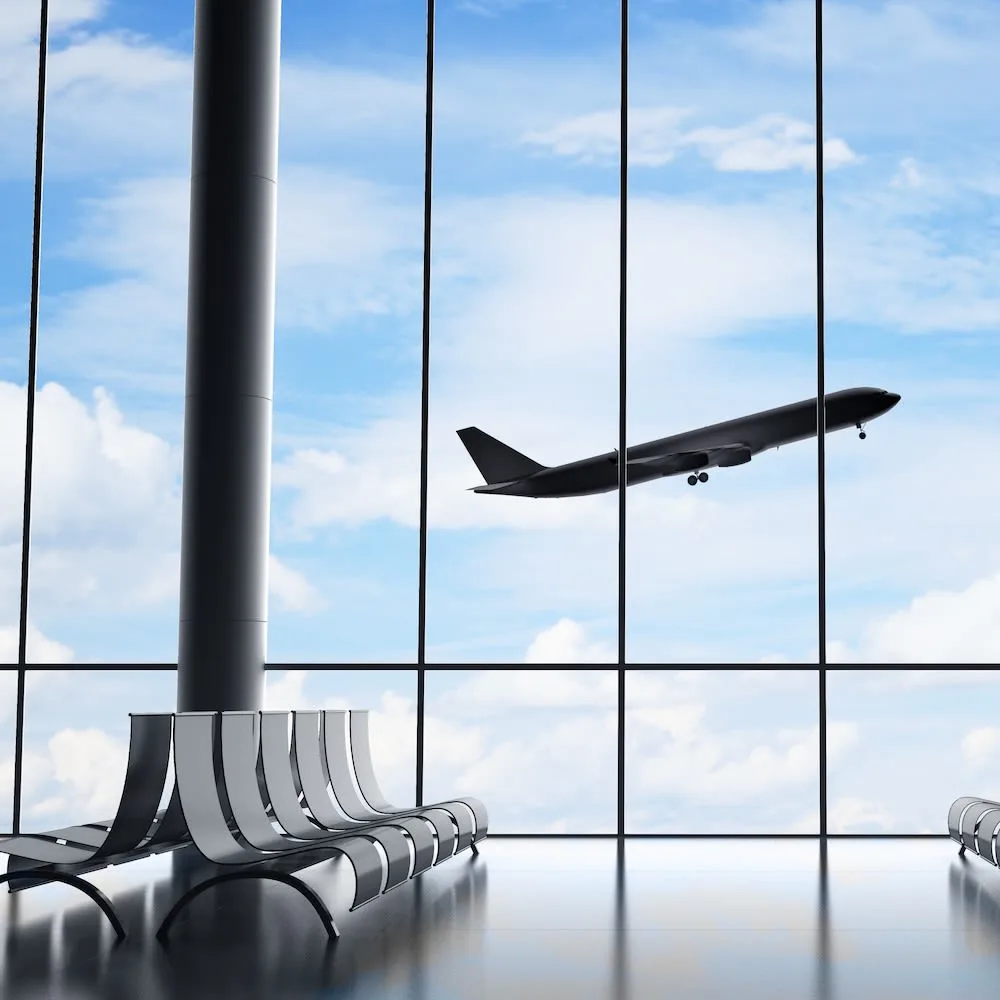
Day 9
Depart Salzburg
View More
Day 9
Depart Salzburg

To Be Determined
Transfer to Airport
Salzburg has one main airport, Salzburg Airport, although many depart from nearby Munich Airport (see below). Your hotel can arrange a reliable taxi or if you have the app, Uber is also a good option. You can also arrange a private transfer. If you are picked up about 2.5 hours before your departure time, you should arrive at the airport with a little over two hours to spare, depending on traffic. If you are leaving during rush hour, you may want to budget an extra fifteen minutes. Keep in mind though that Salzburg Airport is a very small airport, so you may end up departing from Munich instead. The Munich airport has its own rail station, making it easy to take an approximately 2-hour train ride from Salzburg.

Day 9
Depart Salzburg
View More


What's Included In Your Trip

Pre-Paid Tours and Activities:
- Guided Walk through Vienna's Inner City
- Guided Walking Tour of Salzburg
- Sound of Music Guided Bus Tour

Pre-Paid Transportation:
- 2nd Class Train Tickets from Vienna to Salzburg
- Public Transport Tickets for Vienna

Accommodation:
- 5 nights at a hotel of your choice in Vienna
- 5 nights at a hotel of your choice in Salzburg

Go Real Travel Mobile App:
- Itinerary Plan & Reservations Info
- Points of Interest
- Detailed Travel Information
- Maps & Directions
Other Trips You May Like

10 Days
From$1940USD

7 Days
From$1498USD

14 Days
From$2897USD
14-Day Trip to Historic Munich, Salzburg, Vienna, and Prague

Germany, Austria, Czech Republic

10 Days
From$2249USD
Perfect Whirlwind Itinerary to Prague, Salzburg, Vienna & Budapest

Czech Republic, Austria, Hungary

10 Days
From$1749USD
Melodies and Marvels: A 10-Day Musical Journey through Vienna, Salzburg, and Hallstatt

Austria

7 Days
From$1240USD

7 Days
From$1675USD

5 Days
From$868USD

10 Days
From$1749USD

10 Days
From$1940USD

7 Days
From$1498USD

14 Days
From$2897USD
14-Day Trip to Historic Munich, Salzburg, Vienna, and Prague

Germany, Austria, Czech Republic

10 Days
From$2249USD
Perfect Whirlwind Itinerary to Prague, Salzburg, Vienna & Budapest

Czech Republic, Austria, Hungary

10 Days
From$1749USD
Melodies and Marvels: A 10-Day Musical Journey through Vienna, Salzburg, and Hallstatt

Austria

7 Days
From$1240USD

7 Days
From$1675USD

5 Days
From$868USD

10 Days
From$1749USD
prev
next
Featured Blogs
prev
next
Our Customers Say It Best
Otto Chuy, Los Angeles, California
I am still surprised how everything worked as planned, without a hitch. All instructions in your itinerary were precise and correct. Your suggestions and comments in each of the locations we went to were very helpful. All your guides, without exception, were wonderful and exactly on time. 

Kathy Mongeau, Ottawa, Ontario
My sister, Ann Ibberson, and I have been back home for a few weeks now and still go on and on about our fabulous trip. We were just blown away in every respect. Given the fact that we only had 1 ½ weeks, you had everything arranged for us so efficiently and your contacts who we dealt with for transfers, tours, hotels were extremely professional and personable. Things could not have gone better. 

Clive Andrew, Brisbane, Queensland
Just a quick note to let you know that I am back home now after probably the best overseas holiday that I have ever had, in no small part due to your very capable organization booking of hotels, tours, & trains. There was just nothing that went wrong with the timings etc. 

Malini Dutta, Boston, Massachusetts
We can't thank you enough for the detailed plans, maps, and suggestions. It really felt that someone was holding our hands and showing us around. We had all the excitement of discovering foreign lands, with none of the problems that can happen while negotiating unfamiliar places. In fact, all the cities felt like home within a few hours of arriving and exploring. 

Bev and Mark Frankel, Williamsburg, Virginia
We could not be more pleased with Go Real Travel! You took the guess work out of things like public transport but still managed to allow us the freedom to tour as we wanted. Our guides were exceptional and every time I saw a Viking Cruise tour of 25 people, I realized the quality experience we were getting with Go Real. 

Marianne Strydom, Paarl, South Africa
I just wanted to thank you for organizing an amazing trip for me – I packed in so much in such a short period of time and everything was just perfect. The way you do things makes it possible to really get to know the destination, which for me as a travel agent could not have been better. 

Otto Chuy, Los Angeles, California
I am still surprised how everything worked as planned, without a hitch. All instructions in your itinerary were precise and correct. Your suggestions and comments in each of the locations we went to were very helpful. All your guides, without exception, were wonderful and exactly on time. 

Kathy Mongeau, Ottawa, Ontario
My sister, Ann Ibberson, and I have been back home for a few weeks now and still go on and on about our fabulous trip. We were just blown away in every respect. Given the fact that we only had 1 ½ weeks, you had everything arranged for us so efficiently and your contacts who we dealt with for transfers, tours, hotels were extremely professional and personable. Things could not have gone better. 

Clive Andrew, Brisbane, Queensland
Just a quick note to let you know that I am back home now after probably the best overseas holiday that I have ever had, in no small part due to your very capable organization booking of hotels, tours, & trains. There was just nothing that went wrong with the timings etc. 

Malini Dutta, Boston, Massachusetts
We can't thank you enough for the detailed plans, maps, and suggestions. It really felt that someone was holding our hands and showing us around. We had all the excitement of discovering foreign lands, with none of the problems that can happen while negotiating unfamiliar places. In fact, all the cities felt like home within a few hours of arriving and exploring. 

Bev and Mark Frankel, Williamsburg, Virginia
We could not be more pleased with Go Real Travel! You took the guess work out of things like public transport but still managed to allow us the freedom to tour as we wanted. Our guides were exceptional and every time I saw a Viking Cruise tour of 25 people, I realized the quality experience we were getting with Go Real. 

Marianne Strydom, Paarl, South Africa
I just wanted to thank you for organizing an amazing trip for me – I packed in so much in such a short period of time and everything was just perfect. The way you do things makes it possible to really get to know the destination, which for me as a travel agent could not have been better. 



Explore cities in more detail

Prague
The city of Prague is indisputably the gem of Central Europe. Full of history, culture, and classic Czech pubs around every corner, Prague is teeming with nooks and crannies just waiting to be discovered. The narrow cobblestone streets and warm red rooftops give the city a homey feel, while the well-preserved medieval architecture transports you back in time. Walking across the Charles Bridge with the view of the Prague Castle will make you feel like you’re living in a fairytale, and you might as well be. As an up-and-coming destination, Prague is a perfect mix of classic and modern. New trendy cafes and bistros are always popping up, and you can always find a group of lively locals chowing down on goulash and quaffing pivo (the best beer in Europe!) at traditional Czech restaurants across the city. The clash of modernity and tradition, preservation and innovation, gives this city a mysterious air that you won’t soon forget.
Read More
Learn About Prague
Build Prague Trip
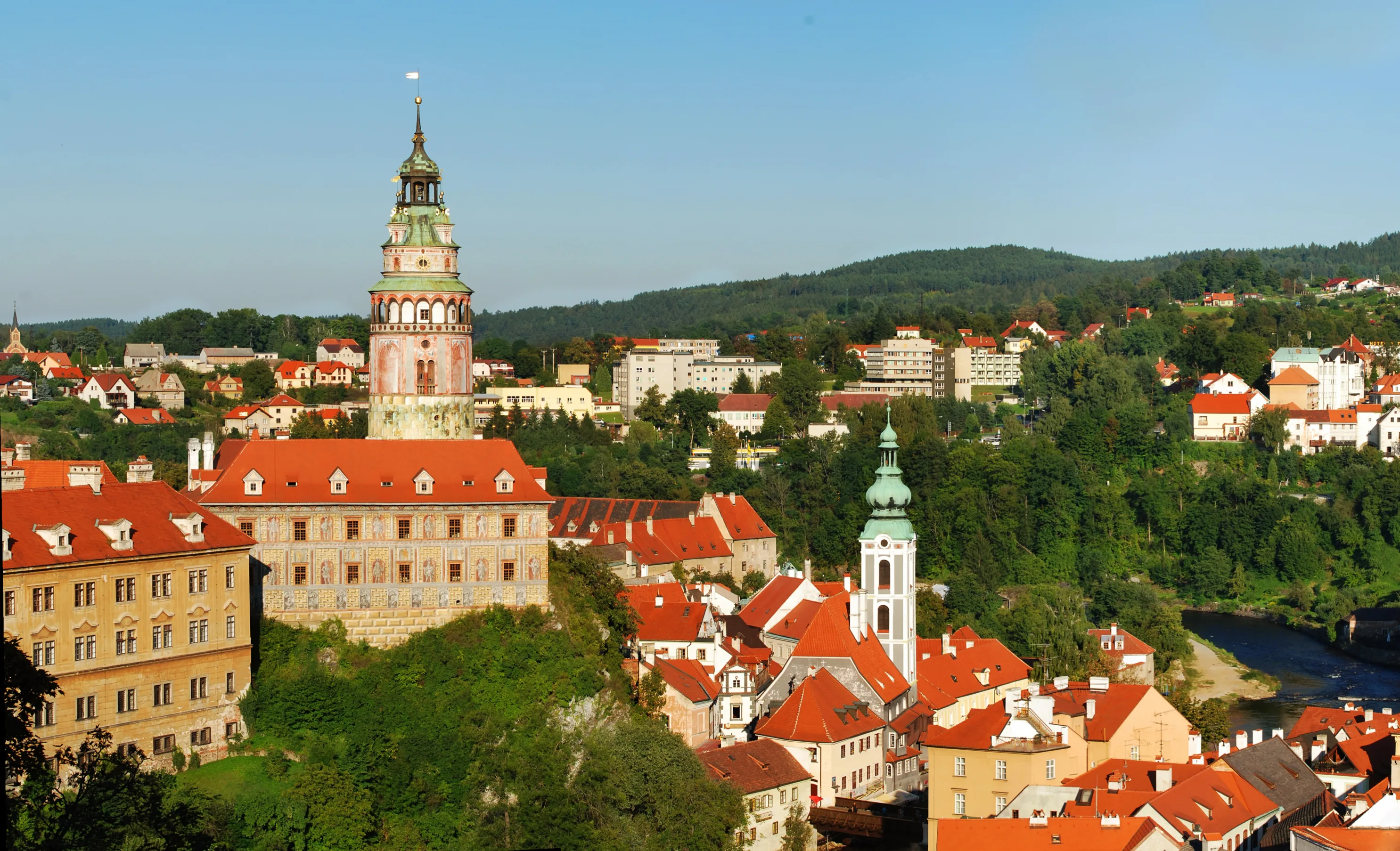
Cesky Krumlov
Cesky Krumlov is a charming little town in South Bohemia. It might be small, but it’s full of whimsical character and mystery. Walking through the narrow streets and across the bridge, the views of the medieval Cesky Krumlov Castle will take your breath away. At night, street musicians serenade visitors on the bridge where you can dance beneath the stars and the watchful eye of the magnificent tower. Dozens of unique local artisan shops, cafes, and restaurants are woven among the winding streets. In the summer, the city is lush with life and greenery. Rafters race down the river, stopping in the center along the way to enjoy a hearty meal before continuing their journey. In the winter, the main square transforms into a magnificent Christmas market and light blankets of snow cover the rooftops. This quaint little town will exceed your expectations and you may never want to leave.
Read More
Learn About Cesky Krumlov
Build Cesky Krumlov Trip

Bratislava
Bratislava is one of the most up-and-coming cities in central Europe. After years in the shadows of the Soviet bloc, and often drowned out by Prague, Bratislava has finally broken out. The Bratislavan region is now one of the richest per capita in the EU. This economic upswing has infused Bratislava with a newfound zeal. Trendy cafes and cool shopping centers are popping up everywhere, and the city’s already happening nightlife scene is only set to get better. Still less crowded than its central European neighbors Prague, Vienna, and Budapest, but just as intriguing, there’s really never been a better time for a visit to Bratislava. Ruled over by the Hungarians, Austrians, and most recently the Soviets, Bratislava is a city of strange contrasts. As soon as you arrive in Bratislava, you’ll see the pastel-hued churches, baroque houses, and the cobbled Old Town Square brush shoulders with modern brutalist buildings, retrofuturistic towers, and the clunky communist built UFO bridge. The city’s oldest building, its castle, is set atop the western edge of the Little Carpathian Hills like a trophy, the city’s hard-won main icon. For the first time in nearly a millennium, Bratislava has now seized control of its own destiny, and it shows.
Read More
Learn About Bratislava
Build Bratislava Trip

Vienna
Artistic and musical, historical and elegant, Vienna is the definition of class. The seat of the Habsburg monarchy for over six centuries, it's no wonder this city is still fit for royalty. Baroque buildings and imperial palaces dominate the cityscape, while locals stride gracefully through the streets, likely on their way to a classical music concert or art exhibition. Visitors from all over the world flock to Schonbrunn Palace, historical museums, and local eateries for authentic Viennese schnitzel. Vienna is also home to world-class wining and dining. Famous dishes include Wiener schnitzel, Tafelspitz (prime boiled beef), and apfelstrudel (apple strudel), all of which pair well with a glass of fine Austrian wine. No matter how long you spend in Vienna, you'll leave with a new appreciation for the finer things in life.
Read More
Learn About Vienna
Build Vienna Trip
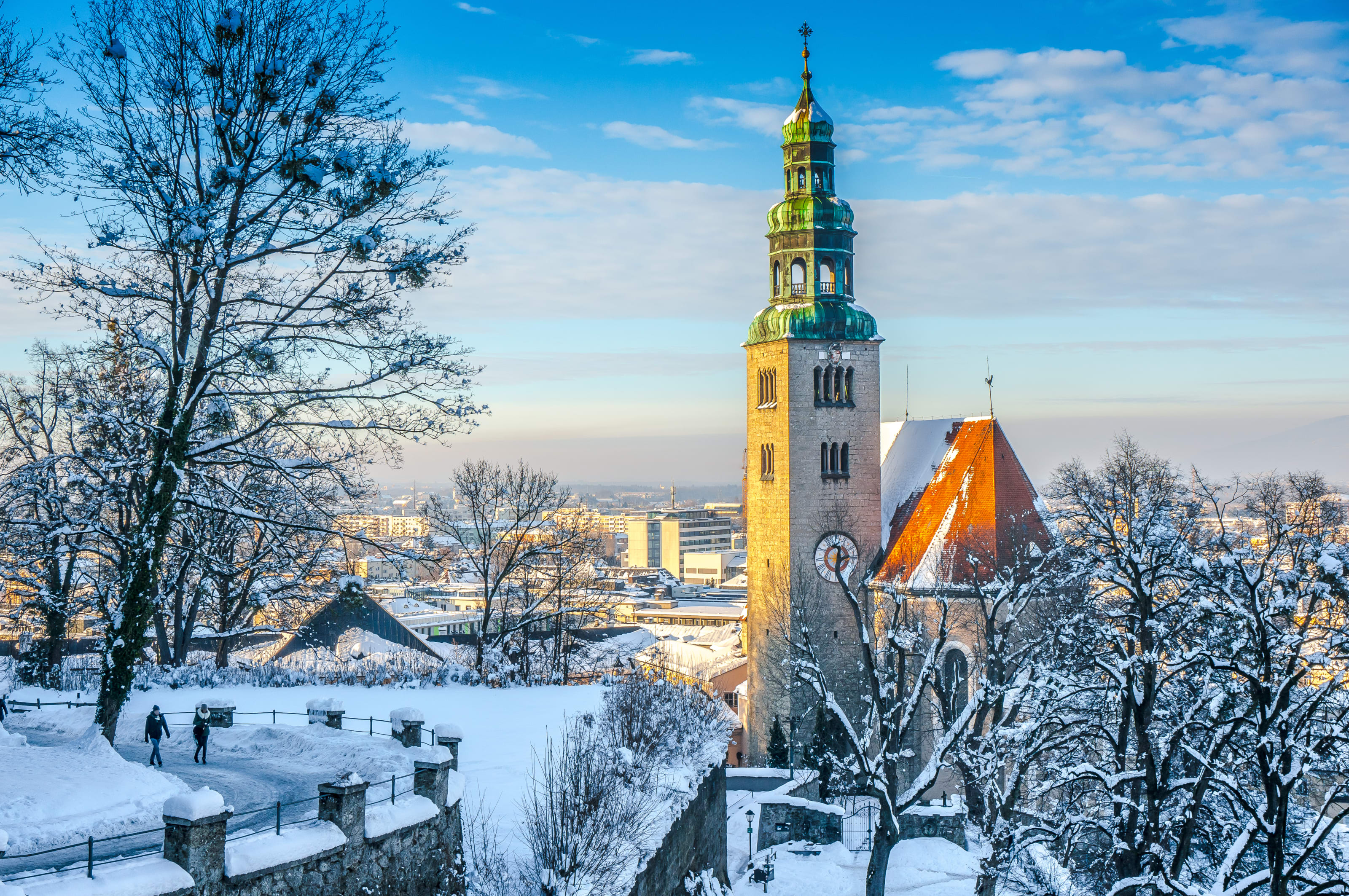
Salzburg
You've probably heard this before— the city of Salzburg is straight out of a fairytale. Nestled in the mountains, this romantic city's Baroque architecture with colorful domes and spires is especially striking against the ancient fortress and Austrian Alpine backdrop. If you're looking for an amazing view, climb up to Hohensalzburg Fortress, Central Europe's largest intact fortress, for a jaw-dropping panorama of the city backed by misty mountains. Perhaps most famous for being the birthplace of the renowned composer Wolfgang Amadeus Mozart and the filming location for the classic The Sound of Music, this city has much to offer. Salzburg has become an important artistic and cultural center, featuring magnificent concert halls that uphold the city's tradition of classical music every day of the year, as well as acclaimed art exhibitions and museums. If you do it right, your visit to Salzburg will immerse you in the city's unforgettable atmosphere and keep you coming back for more.
Read More
Learn About Salzburg
Build Salzburg Trip
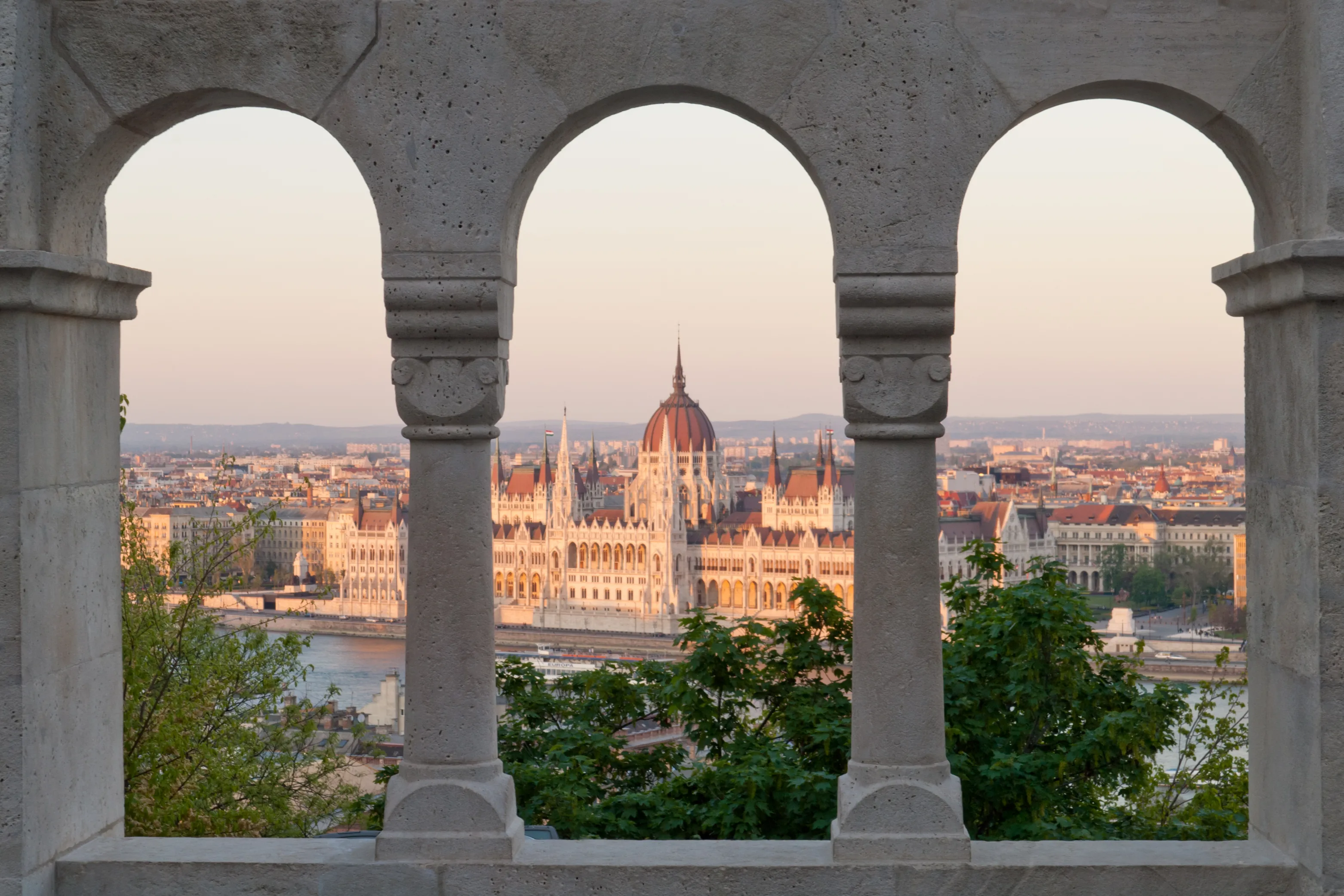
Budapest
Situated at the heart of Europe, Budapest is the capital of Hungary, appropriately named 'The Pearl of the Danube,' for its fixating and almost haunting beauty. Formerly two separate cities, Buda and Pest were forged into one by time, occupation, and the eight bridges that anchor them together today. From the Romans to the Communists, each occupier left its flavor profile in Budapest, evident in the famous spicy Hungarian stew known as 'goulash.' Budapest is a melting pot of history, culture, and taste, from the magnificent Baroque and neo-Gothic architecture to the Turkish thermal baths. After a long day of sightseeing, treat yourself to a glass of Tokaj, what King Louis XIV of France referred to as the "Wine of Kings, King of Wines". Budapest has a flavor to satisfy any taste.
Read More
Learn About Budapest
Build Budapest Trip

Prague
The city of Prague is indisputably the gem of Central Europe. Full of history, culture, and classic Czech pubs around every corner, Prague is teeming with nooks and crannies just waiting to be discovered. The narrow cobblestone streets and warm red rooftops give the city a homey feel, while the well-preserved medieval architecture transports you back in time. Walking across the Charles Bridge with the view of the Prague Castle will make you feel like you’re living in a fairytale, and you might as well be. As an up-and-coming destination, Prague is a perfect mix of classic and modern. New trendy cafes and bistros are always popping up, and you can always find a group of lively locals chowing down on goulash and quaffing pivo (the best beer in Europe!) at traditional Czech restaurants across the city. The clash of modernity and tradition, preservation and innovation, gives this city a mysterious air that you won’t soon forget.
Read More
Learn About Prague
Build Prague Trip

Cesky Krumlov
Cesky Krumlov is a charming little town in South Bohemia. It might be small, but it’s full of whimsical character and mystery. Walking through the narrow streets and across the bridge, the views of the medieval Cesky Krumlov Castle will take your breath away. At night, street musicians serenade visitors on the bridge where you can dance beneath the stars and the watchful eye of the magnificent tower. Dozens of unique local artisan shops, cafes, and restaurants are woven among the winding streets. In the summer, the city is lush with life and greenery. Rafters race down the river, stopping in the center along the way to enjoy a hearty meal before continuing their journey. In the winter, the main square transforms into a magnificent Christmas market and light blankets of snow cover the rooftops. This quaint little town will exceed your expectations and you may never want to leave.
Read More
Learn About Cesky Krumlov
Build Cesky Krumlov Trip

Bratislava
Bratislava is one of the most up-and-coming cities in central Europe. After years in the shadows of the Soviet bloc, and often drowned out by Prague, Bratislava has finally broken out. The Bratislavan region is now one of the richest per capita in the EU. This economic upswing has infused Bratislava with a newfound zeal. Trendy cafes and cool shopping centers are popping up everywhere, and the city’s already happening nightlife scene is only set to get better. Still less crowded than its central European neighbors Prague, Vienna, and Budapest, but just as intriguing, there’s really never been a better time for a visit to Bratislava. Ruled over by the Hungarians, Austrians, and most recently the Soviets, Bratislava is a city of strange contrasts. As soon as you arrive in Bratislava, you’ll see the pastel-hued churches, baroque houses, and the cobbled Old Town Square brush shoulders with modern brutalist buildings, retrofuturistic towers, and the clunky communist built UFO bridge. The city’s oldest building, its castle, is set atop the western edge of the Little Carpathian Hills like a trophy, the city’s hard-won main icon. For the first time in nearly a millennium, Bratislava has now seized control of its own destiny, and it shows.
Read More
Learn About Bratislava
Build Bratislava Trip

Vienna
Artistic and musical, historical and elegant, Vienna is the definition of class. The seat of the Habsburg monarchy for over six centuries, it's no wonder this city is still fit for royalty. Baroque buildings and imperial palaces dominate the cityscape, while locals stride gracefully through the streets, likely on their way to a classical music concert or art exhibition. Visitors from all over the world flock to Schonbrunn Palace, historical museums, and local eateries for authentic Viennese schnitzel. Vienna is also home to world-class wining and dining. Famous dishes include Wiener schnitzel, Tafelspitz (prime boiled beef), and apfelstrudel (apple strudel), all of which pair well with a glass of fine Austrian wine. No matter how long you spend in Vienna, you'll leave with a new appreciation for the finer things in life.
Read More
Learn About Vienna
Build Vienna Trip

Salzburg
You've probably heard this before— the city of Salzburg is straight out of a fairytale. Nestled in the mountains, this romantic city's Baroque architecture with colorful domes and spires is especially striking against the ancient fortress and Austrian Alpine backdrop. If you're looking for an amazing view, climb up to Hohensalzburg Fortress, Central Europe's largest intact fortress, for a jaw-dropping panorama of the city backed by misty mountains. Perhaps most famous for being the birthplace of the renowned composer Wolfgang Amadeus Mozart and the filming location for the classic The Sound of Music, this city has much to offer. Salzburg has become an important artistic and cultural center, featuring magnificent concert halls that uphold the city's tradition of classical music every day of the year, as well as acclaimed art exhibitions and museums. If you do it right, your visit to Salzburg will immerse you in the city's unforgettable atmosphere and keep you coming back for more.
Read More
Learn About Salzburg
Build Salzburg Trip

Budapest
Situated at the heart of Europe, Budapest is the capital of Hungary, appropriately named 'The Pearl of the Danube,' for its fixating and almost haunting beauty. Formerly two separate cities, Buda and Pest were forged into one by time, occupation, and the eight bridges that anchor them together today. From the Romans to the Communists, each occupier left its flavor profile in Budapest, evident in the famous spicy Hungarian stew known as 'goulash.' Budapest is a melting pot of history, culture, and taste, from the magnificent Baroque and neo-Gothic architecture to the Turkish thermal baths. After a long day of sightseeing, treat yourself to a glass of Tokaj, what King Louis XIV of France referred to as the "Wine of Kings, King of Wines". Budapest has a flavor to satisfy any taste.
Read More
Learn About Budapest
Build Budapest Trip
prev
next


 Map of Your Itinerary Route
Map of Your Itinerary Route
Zoom In to the cities to see your itinerary in more detail


 4.8
4.8 
